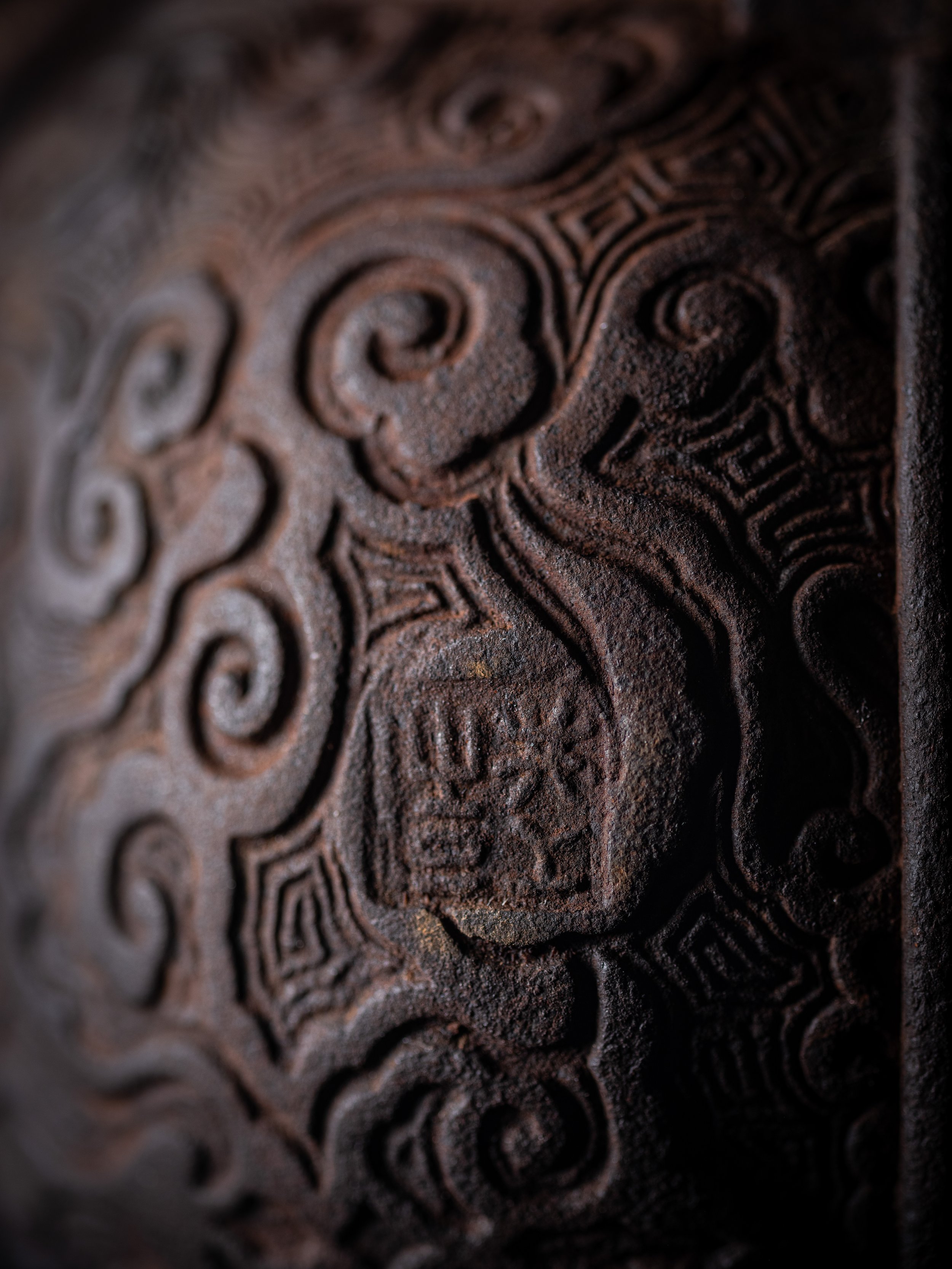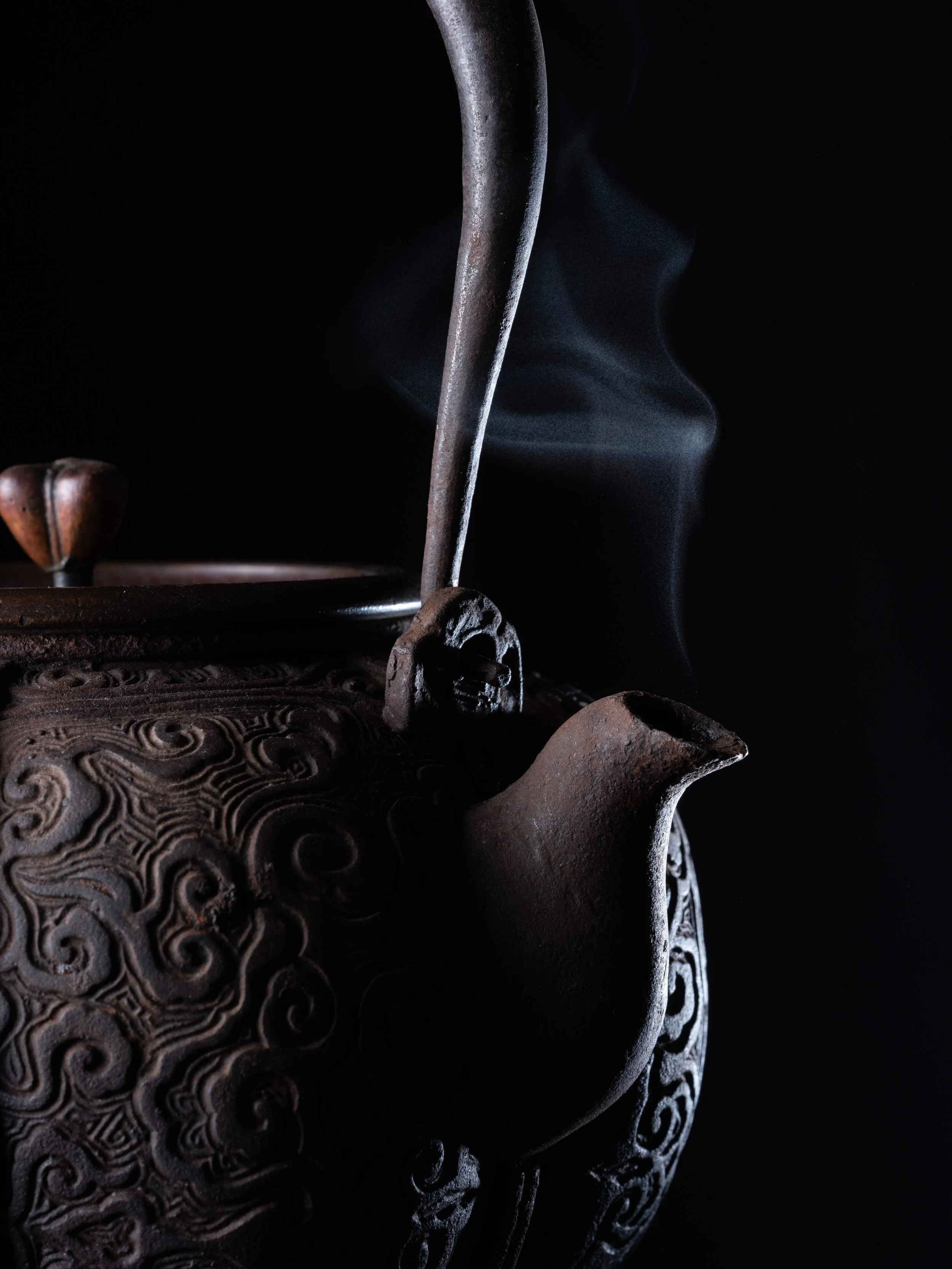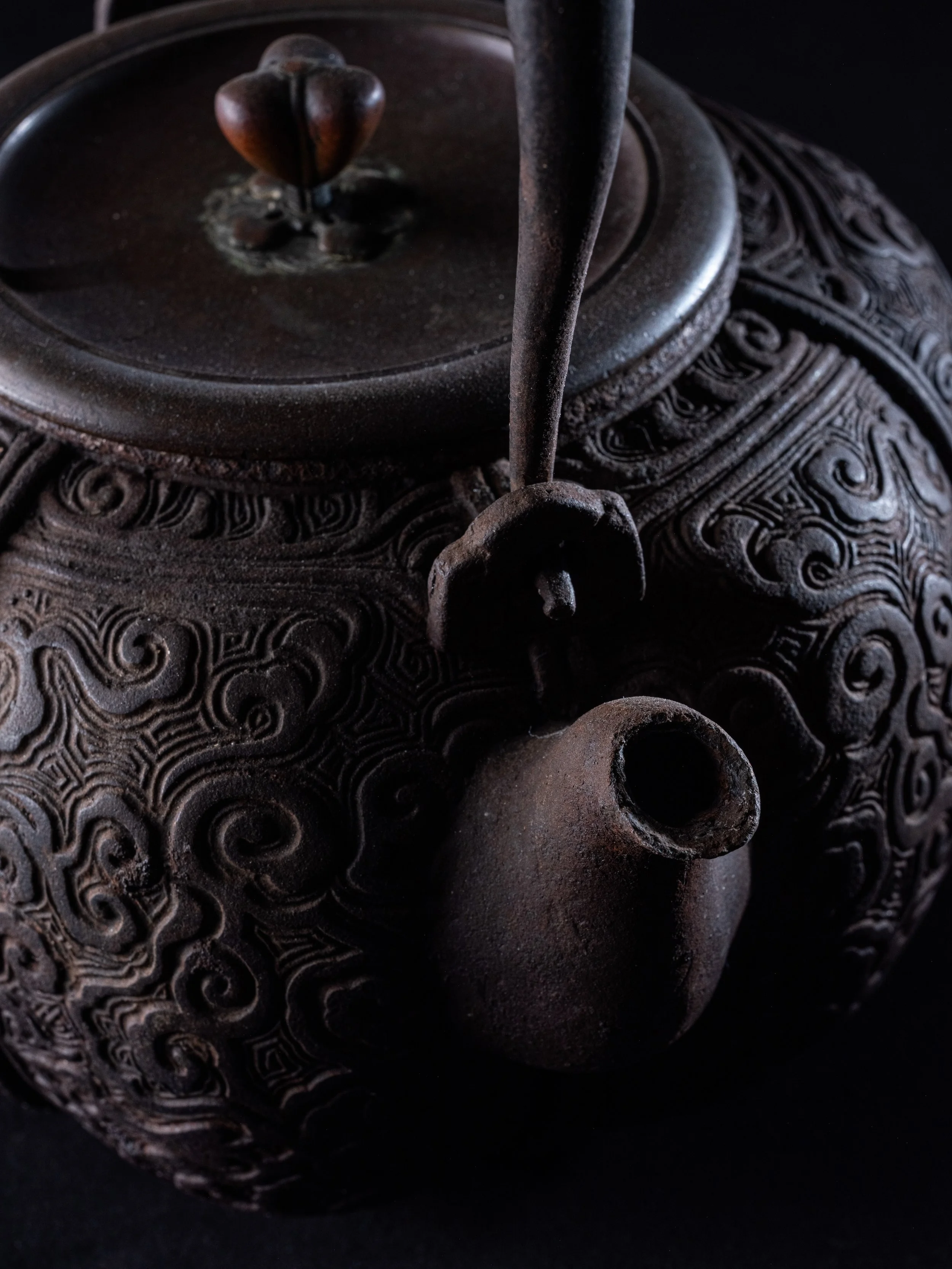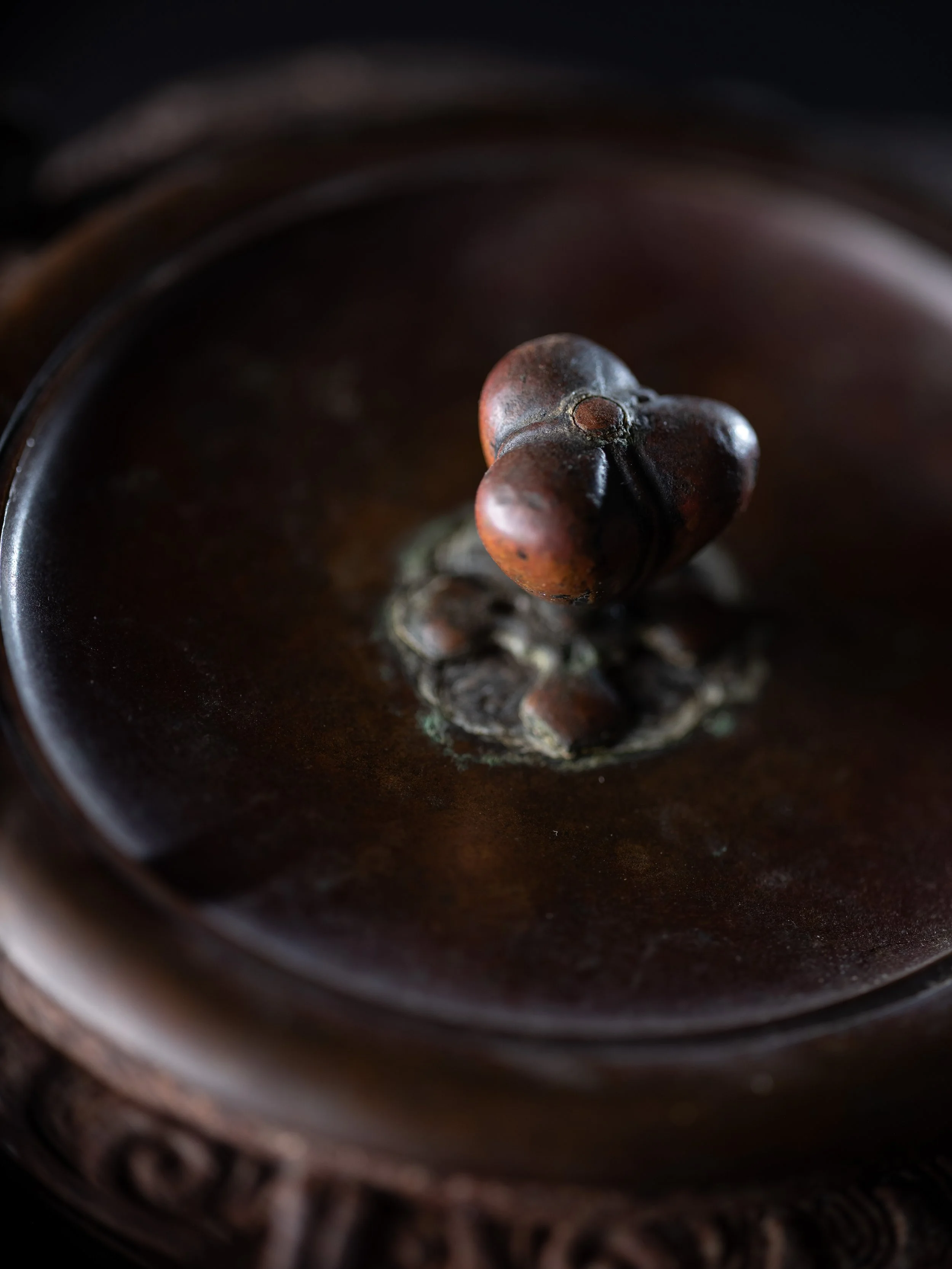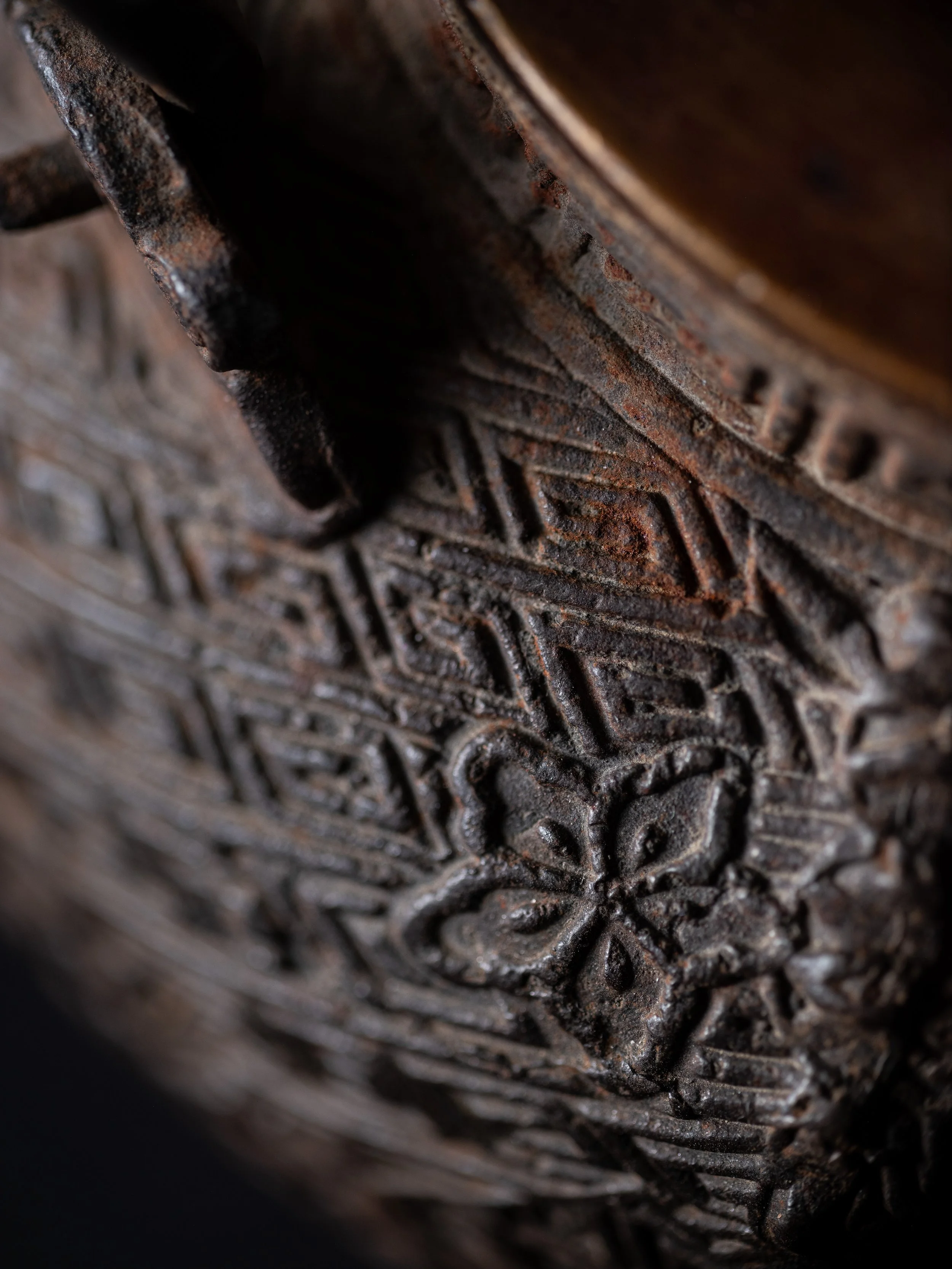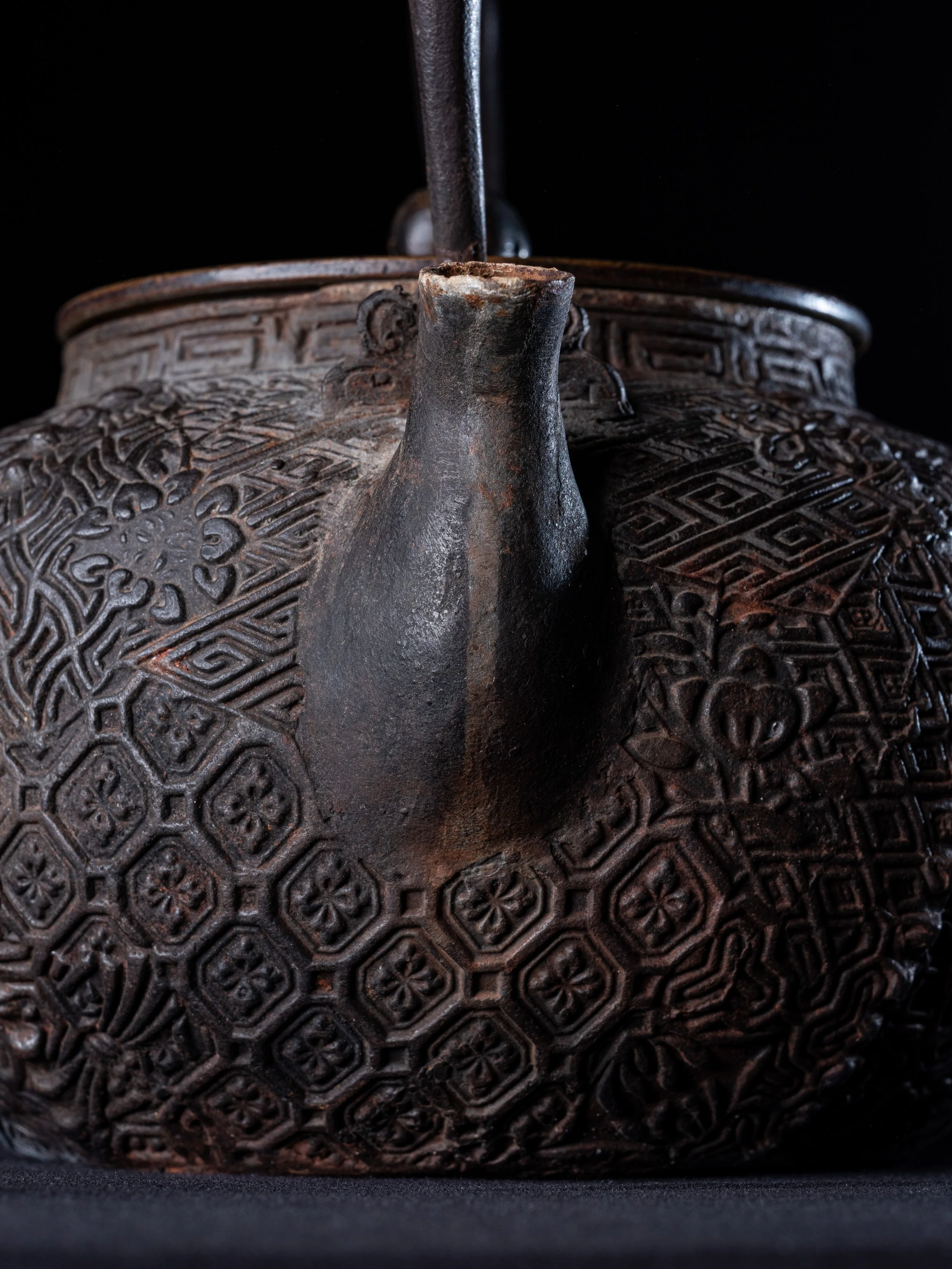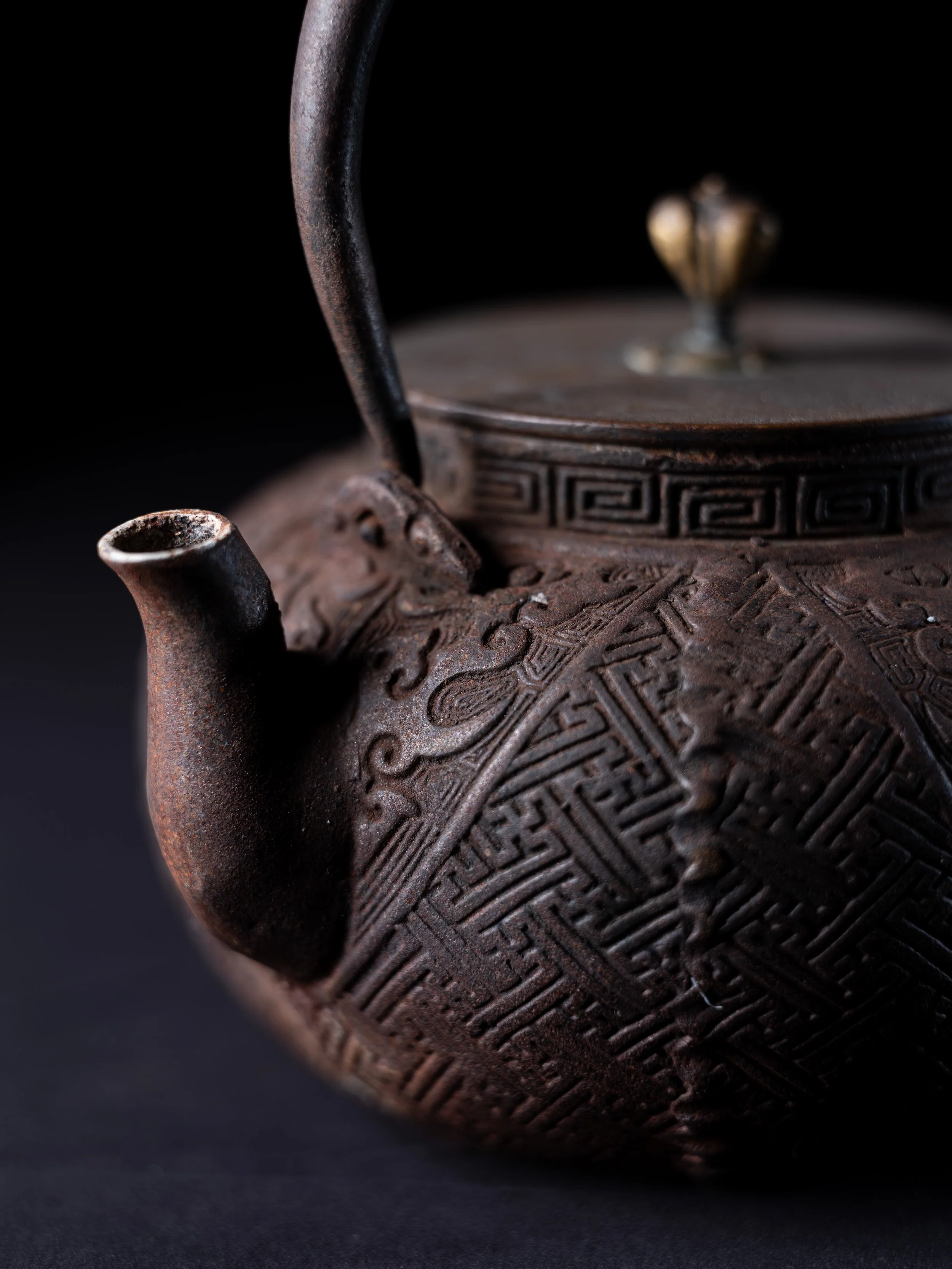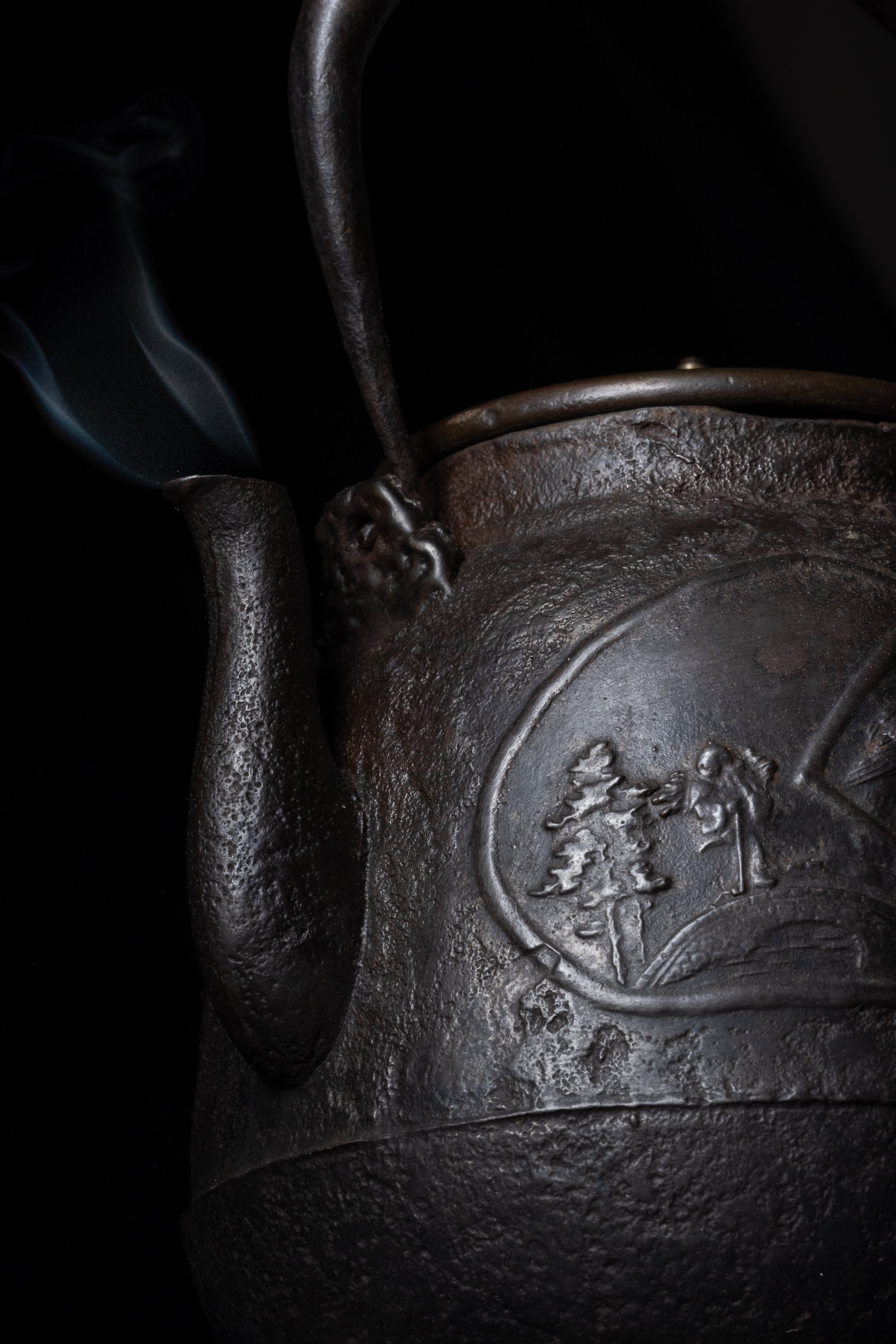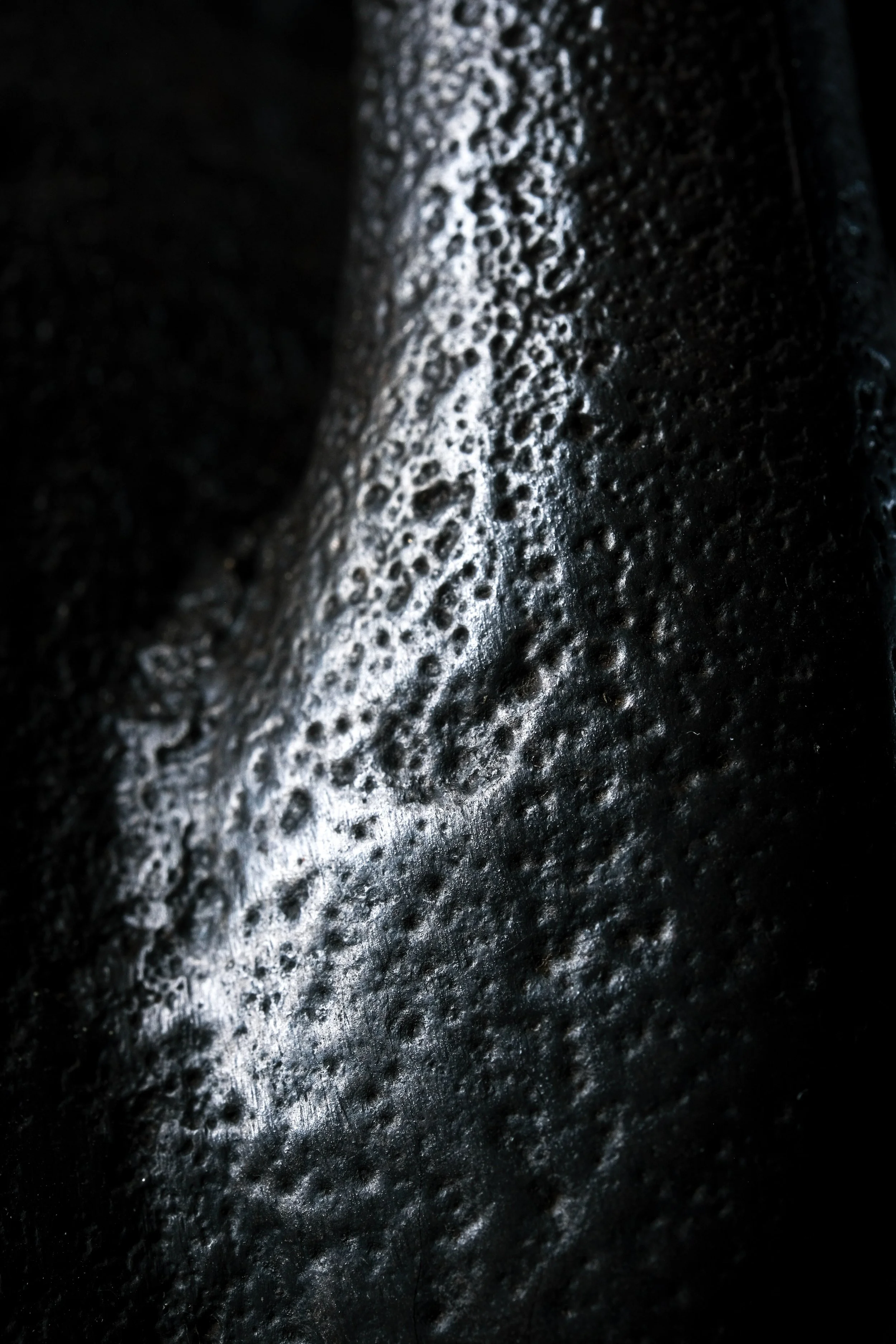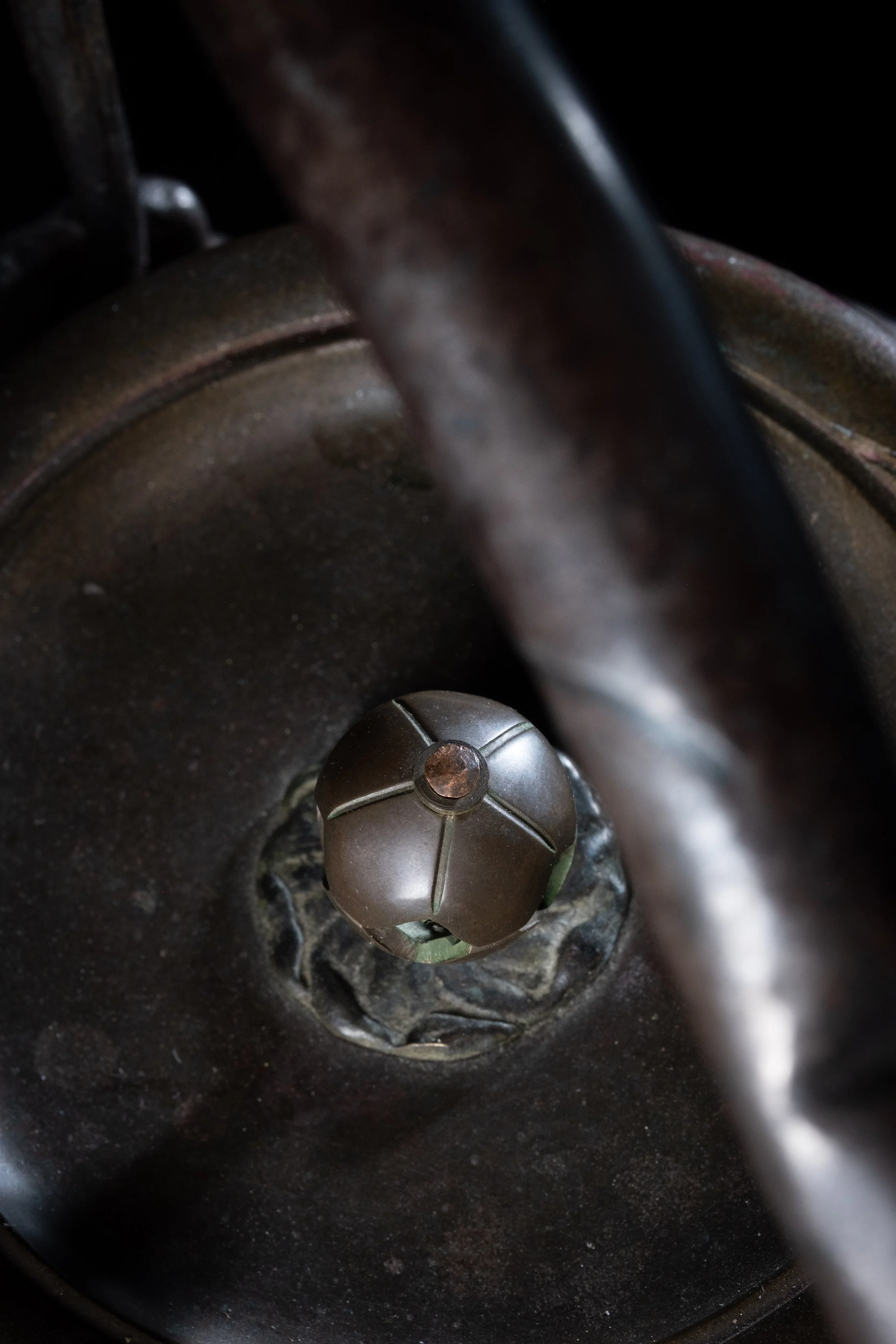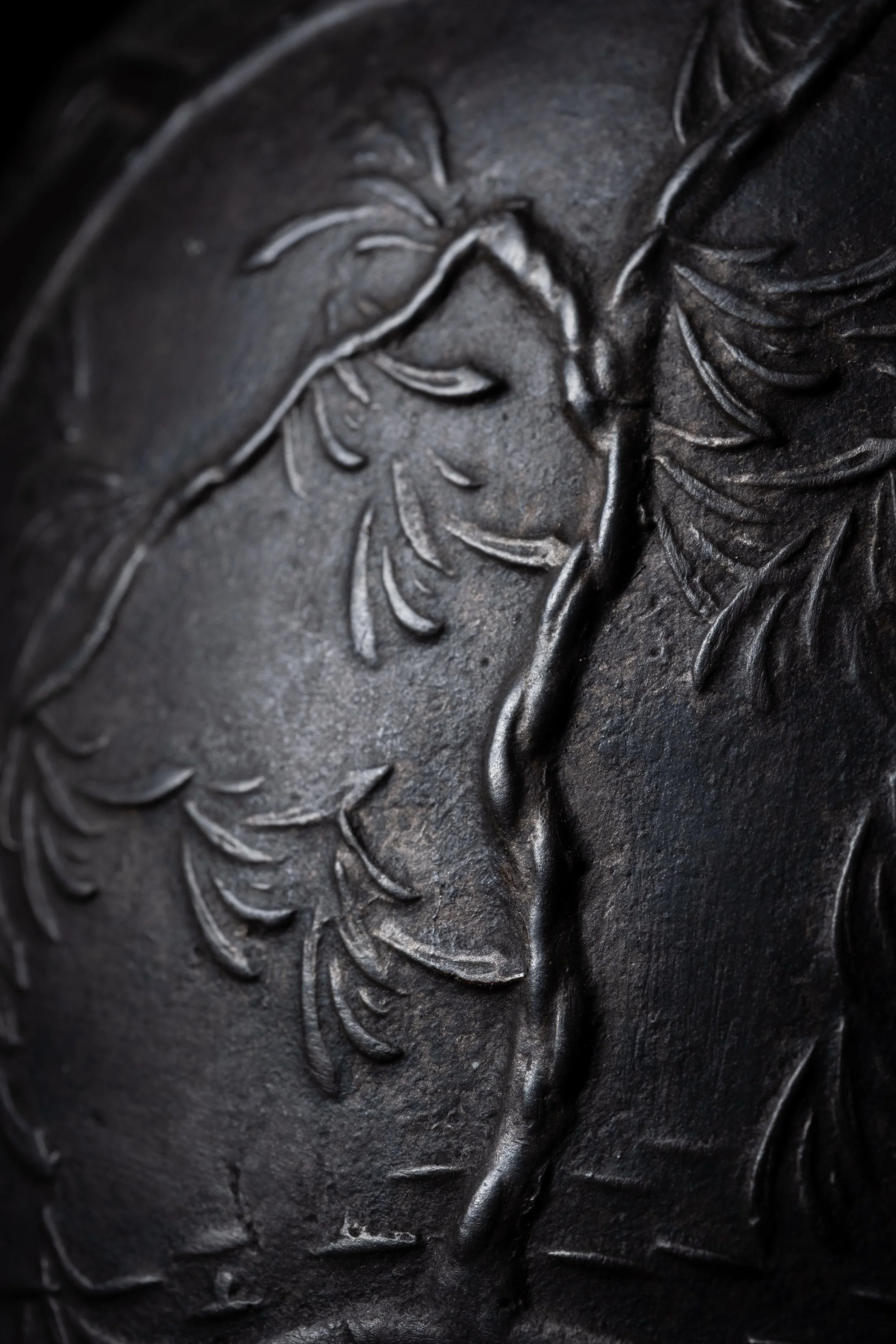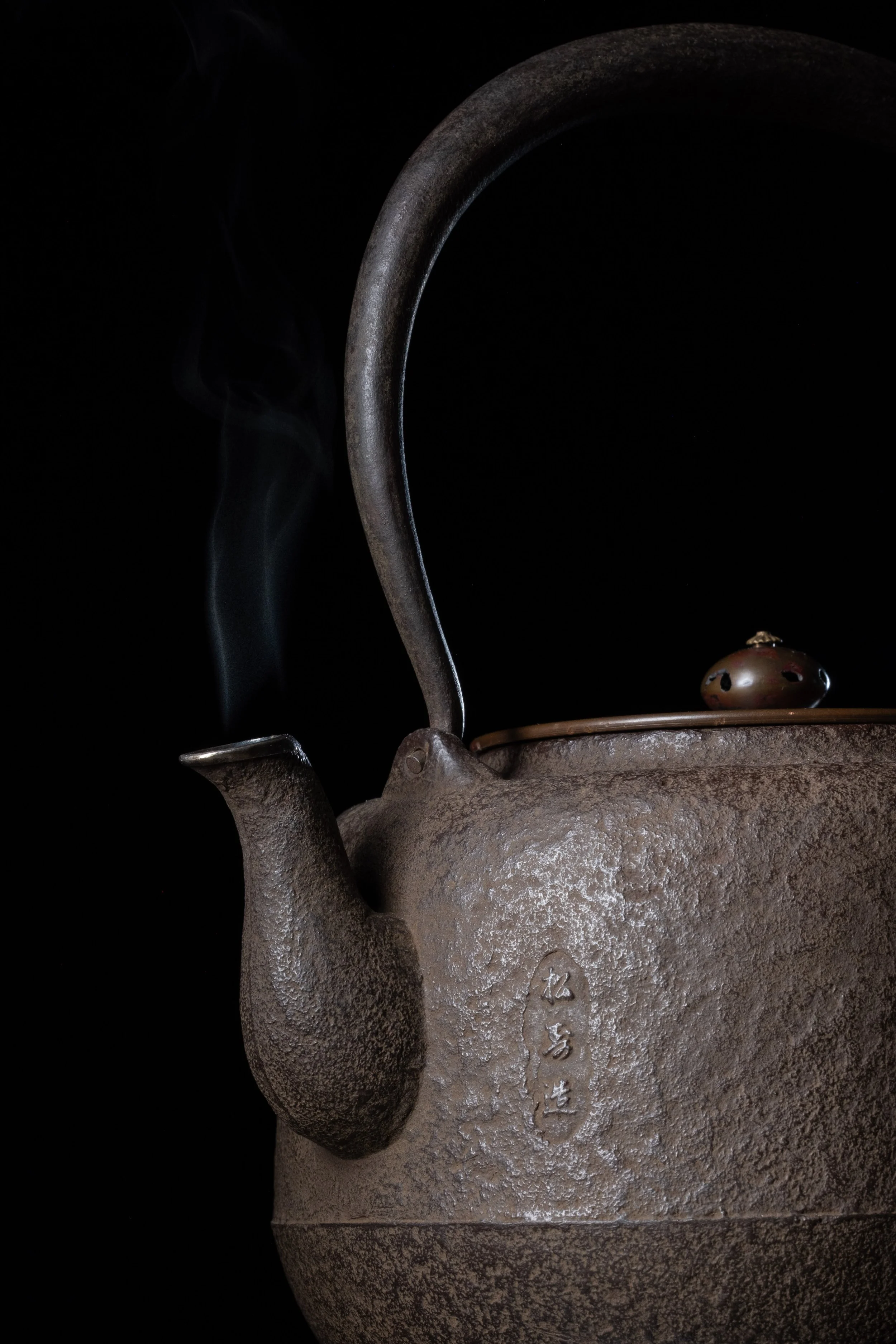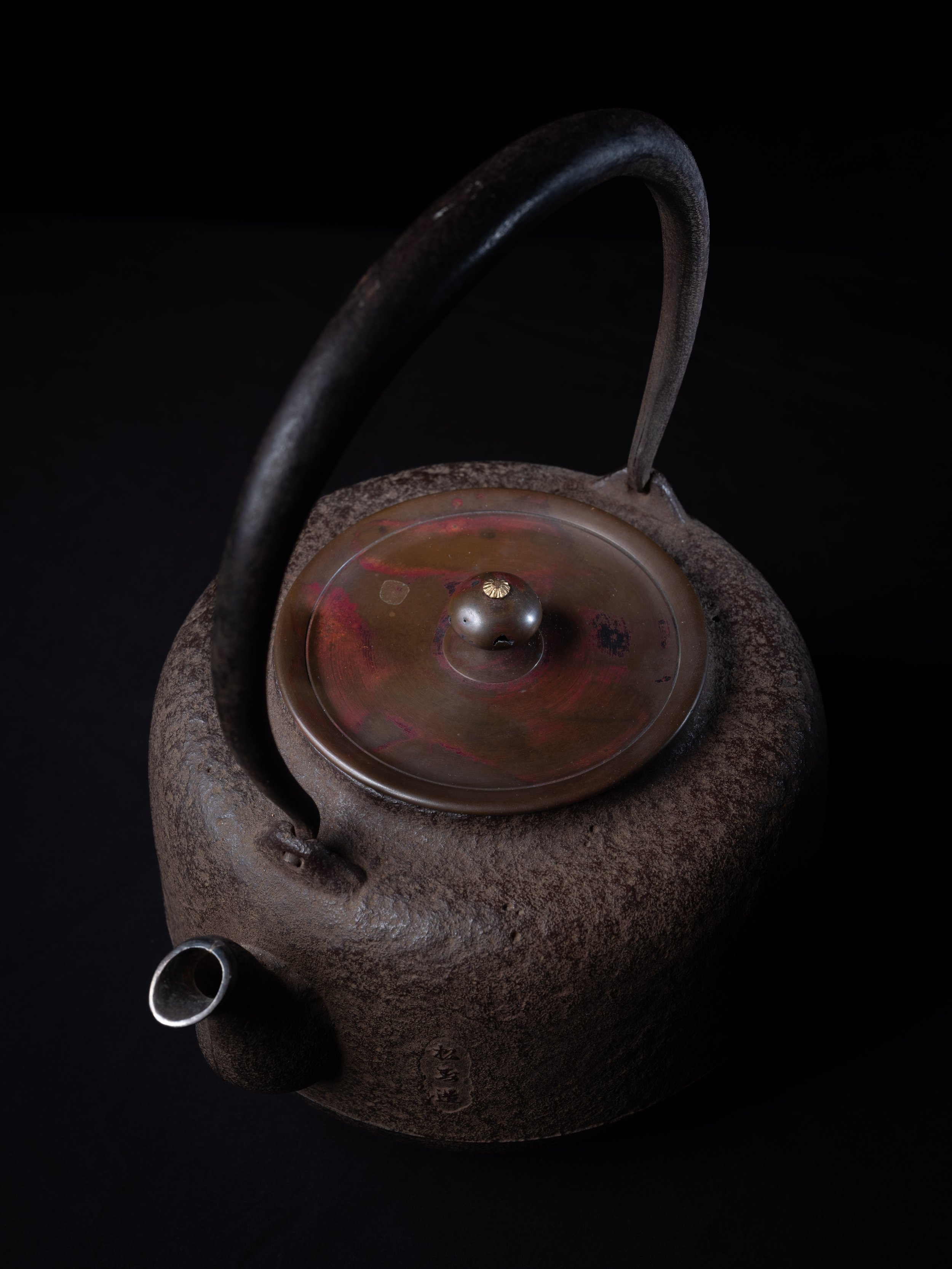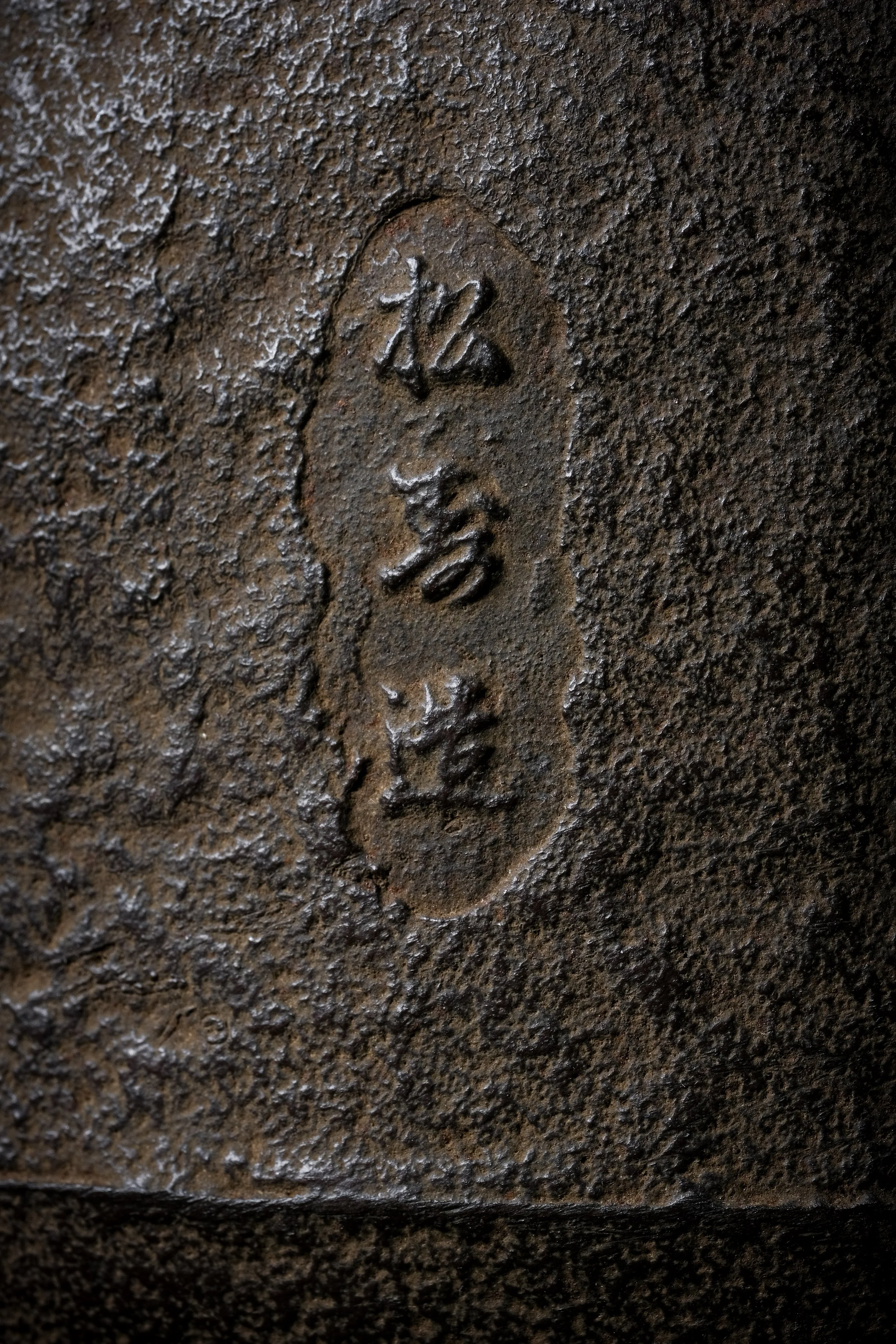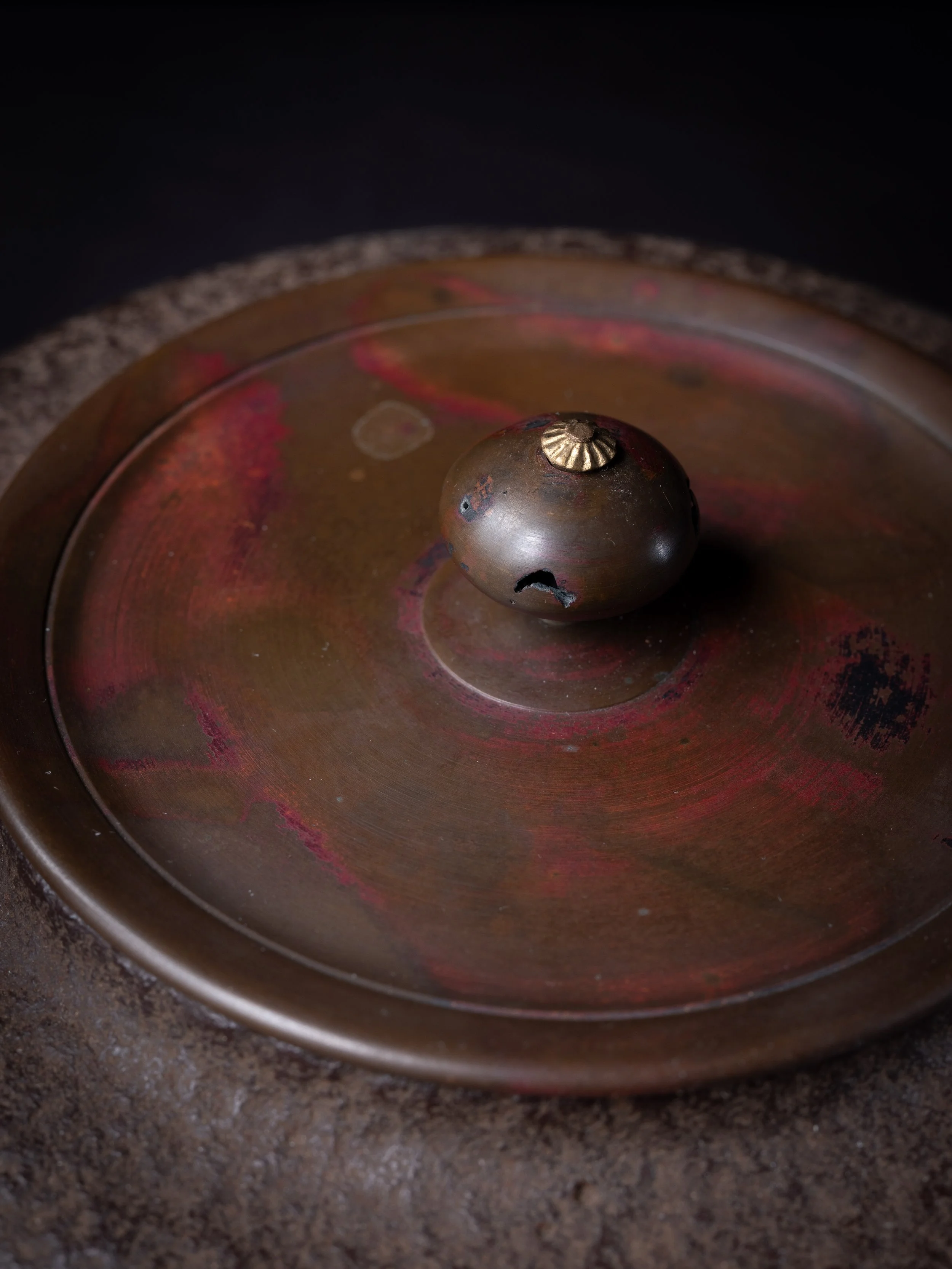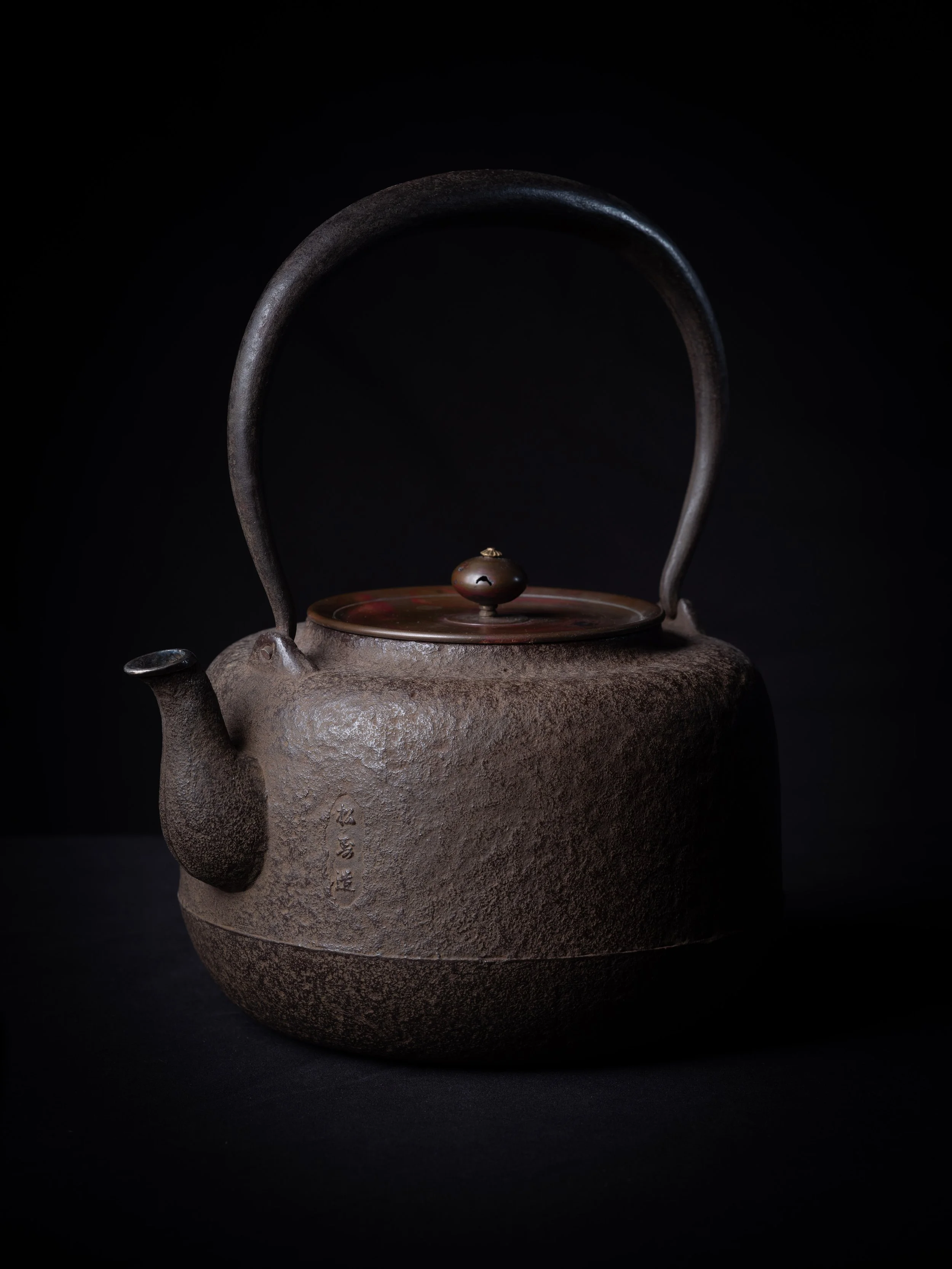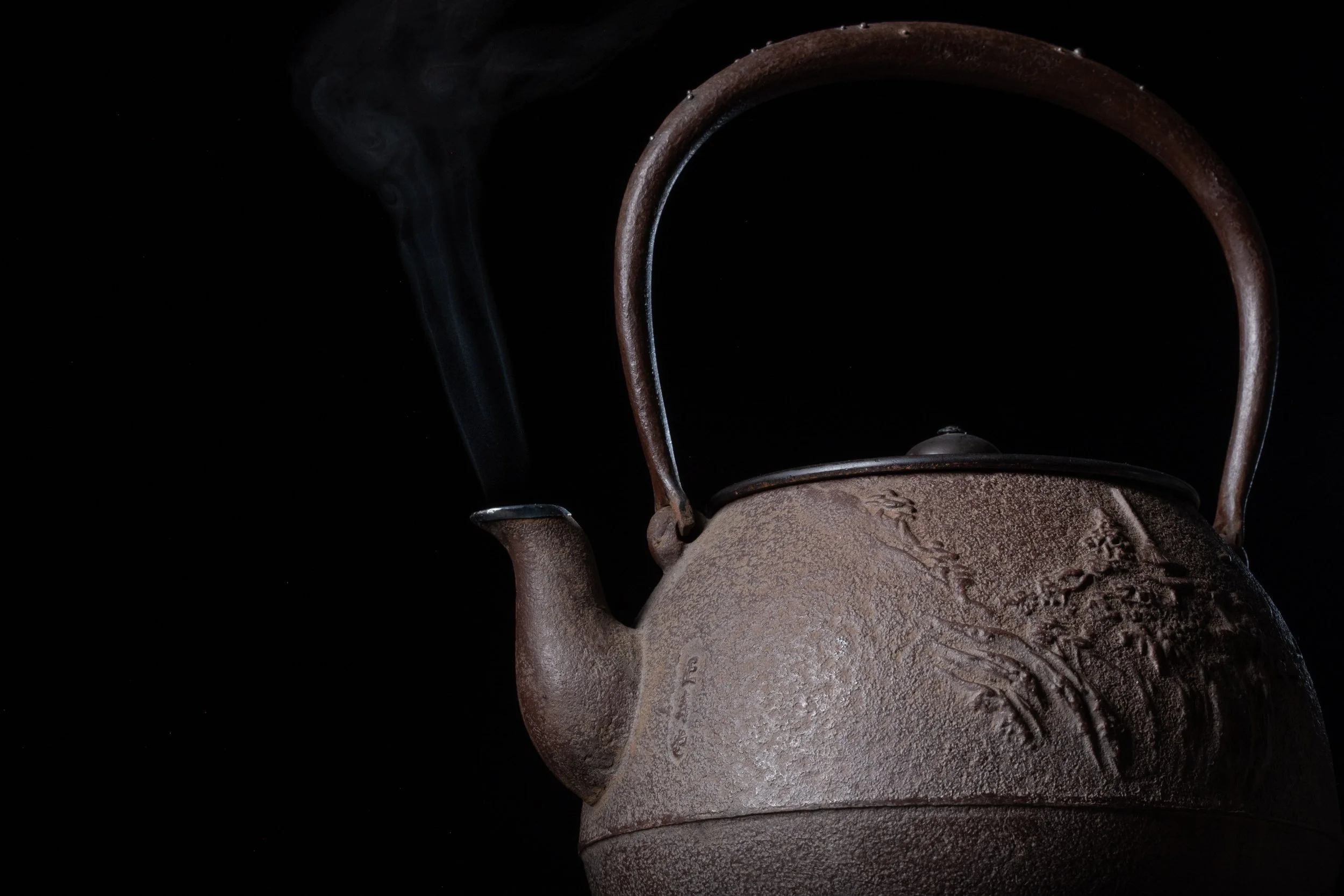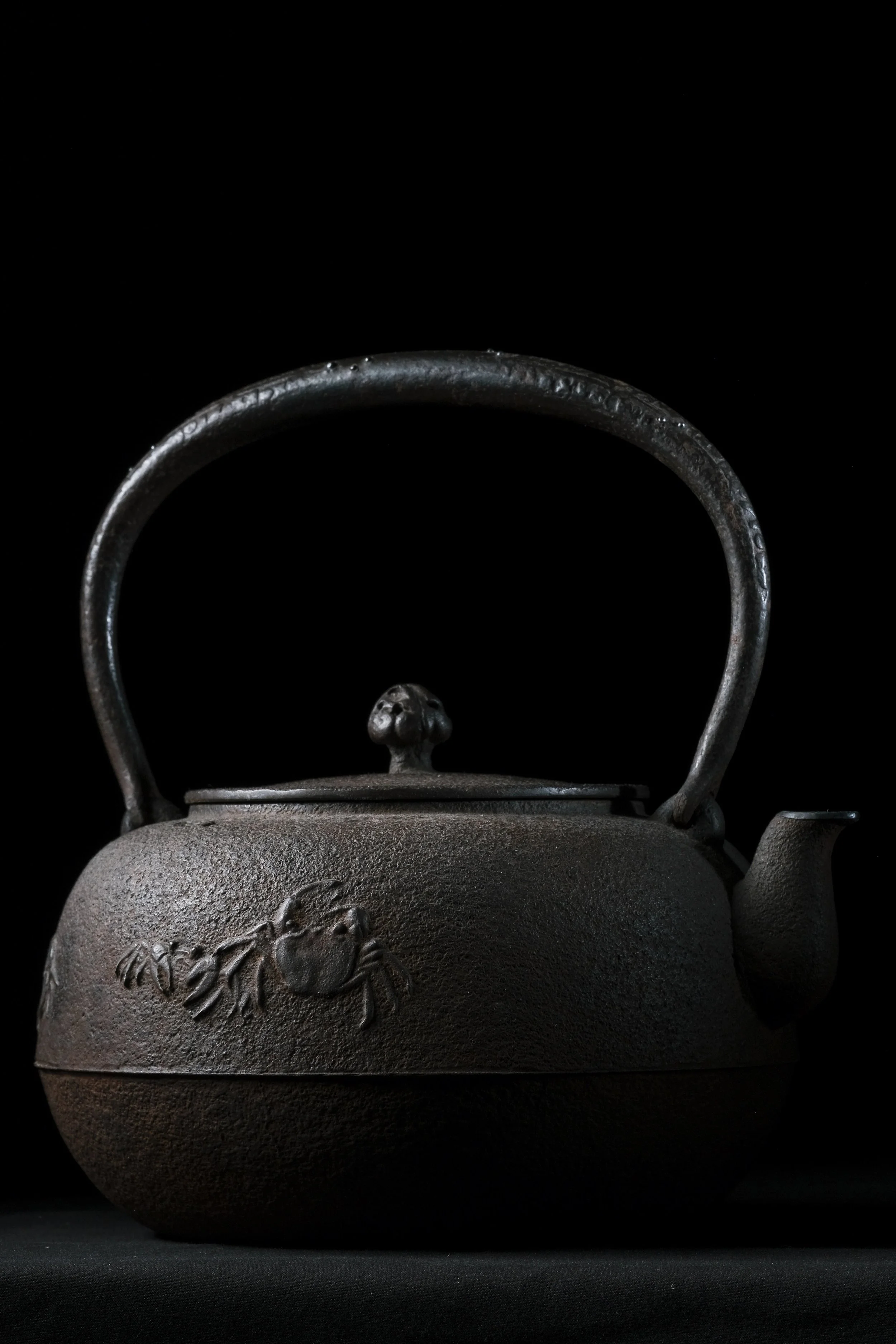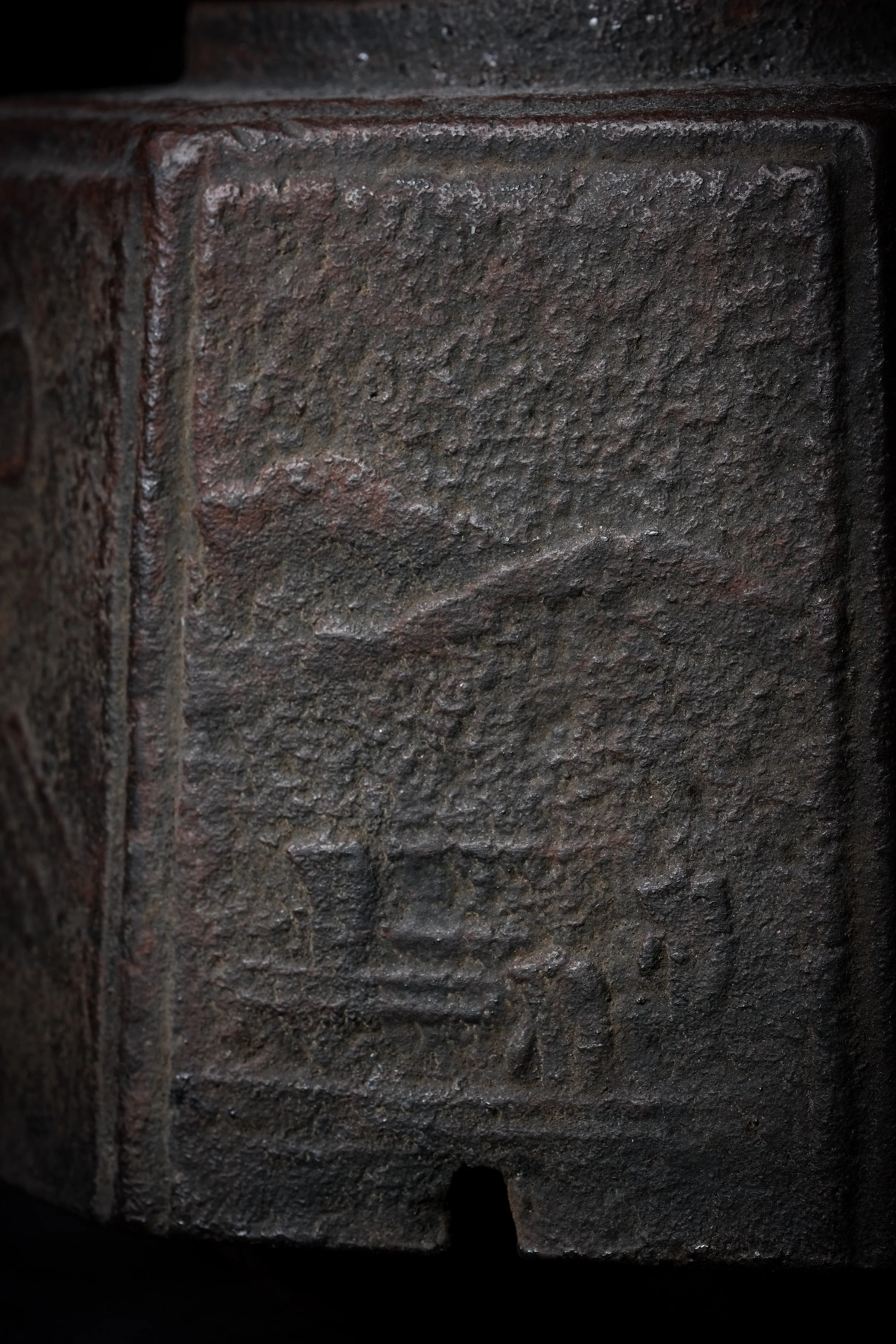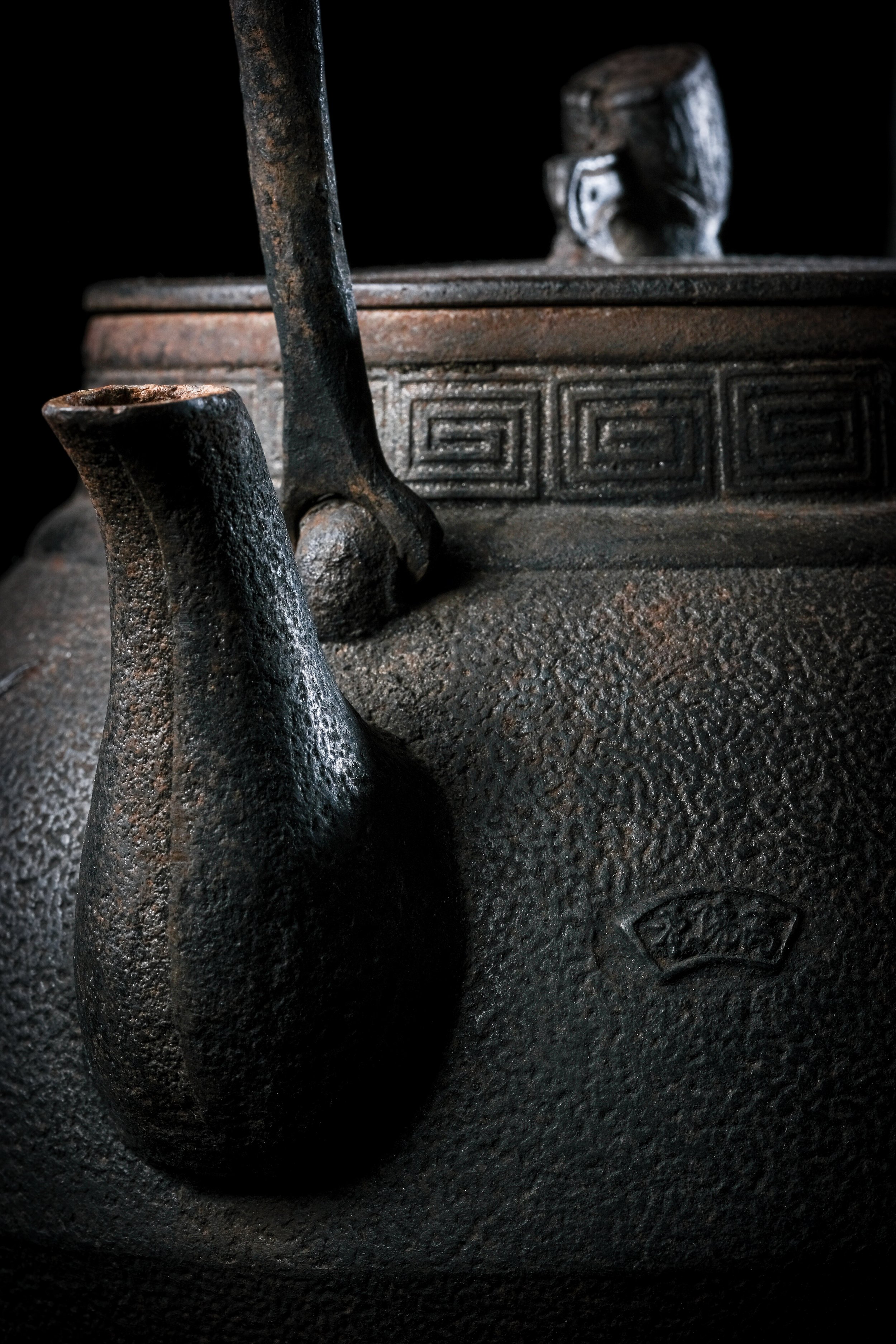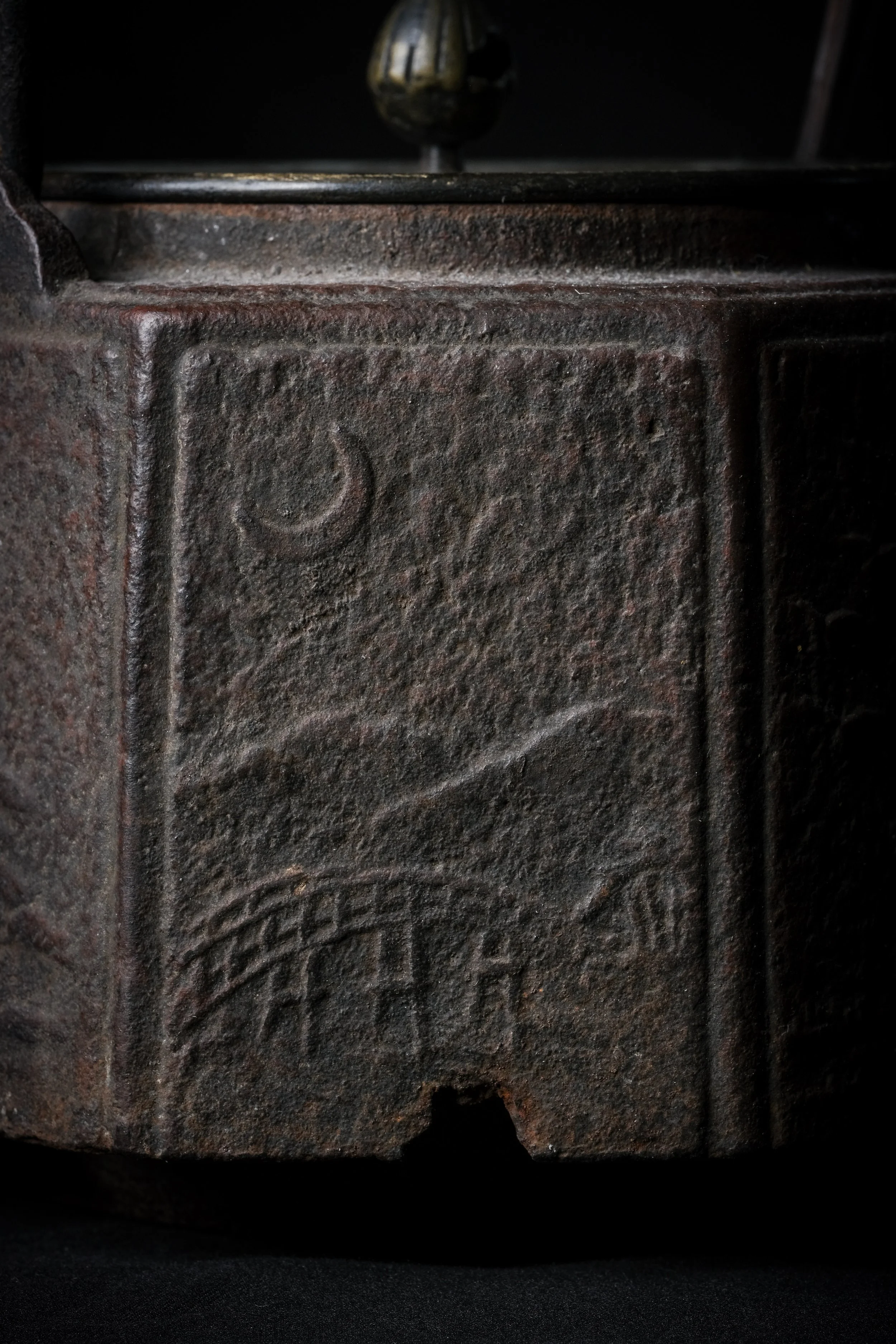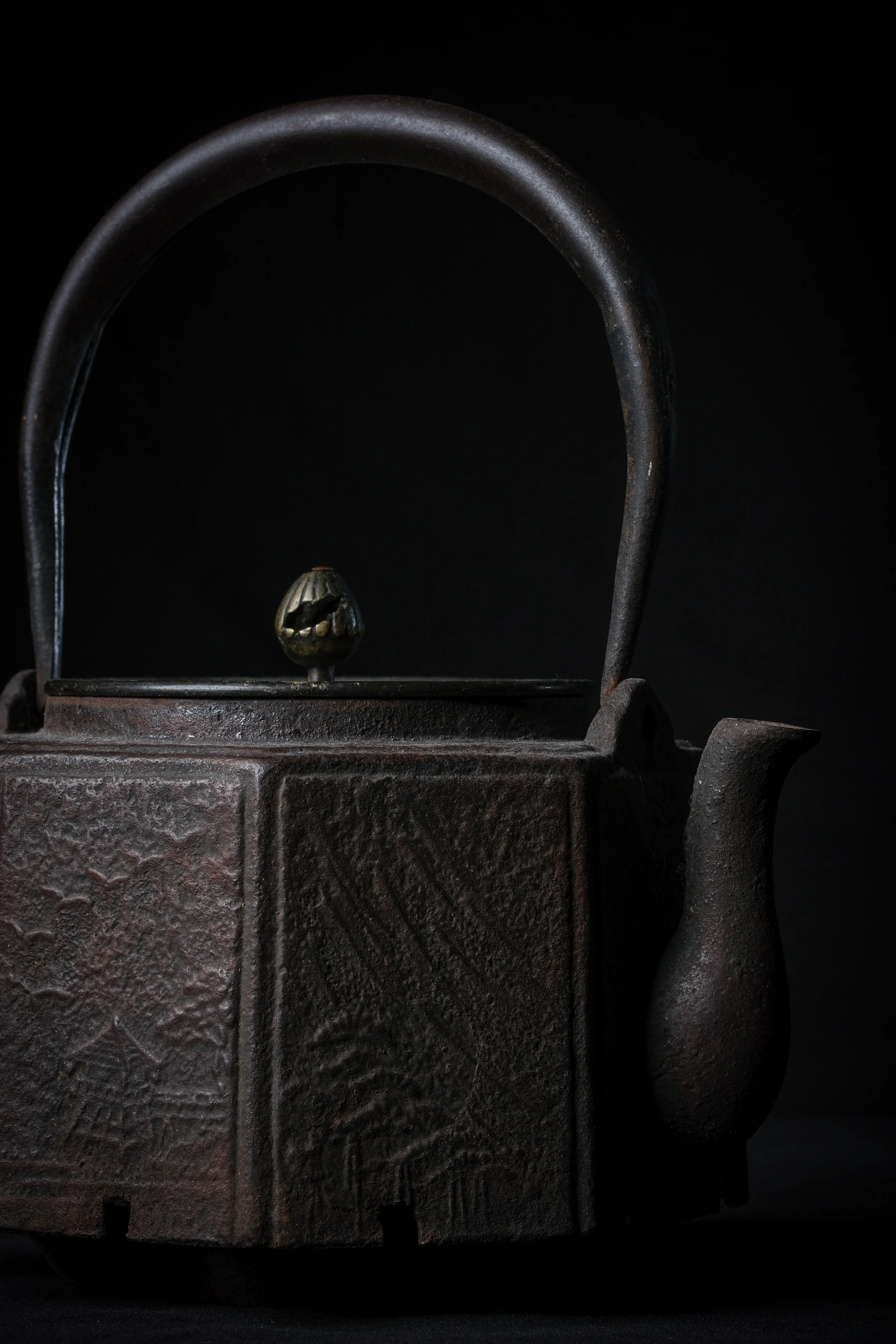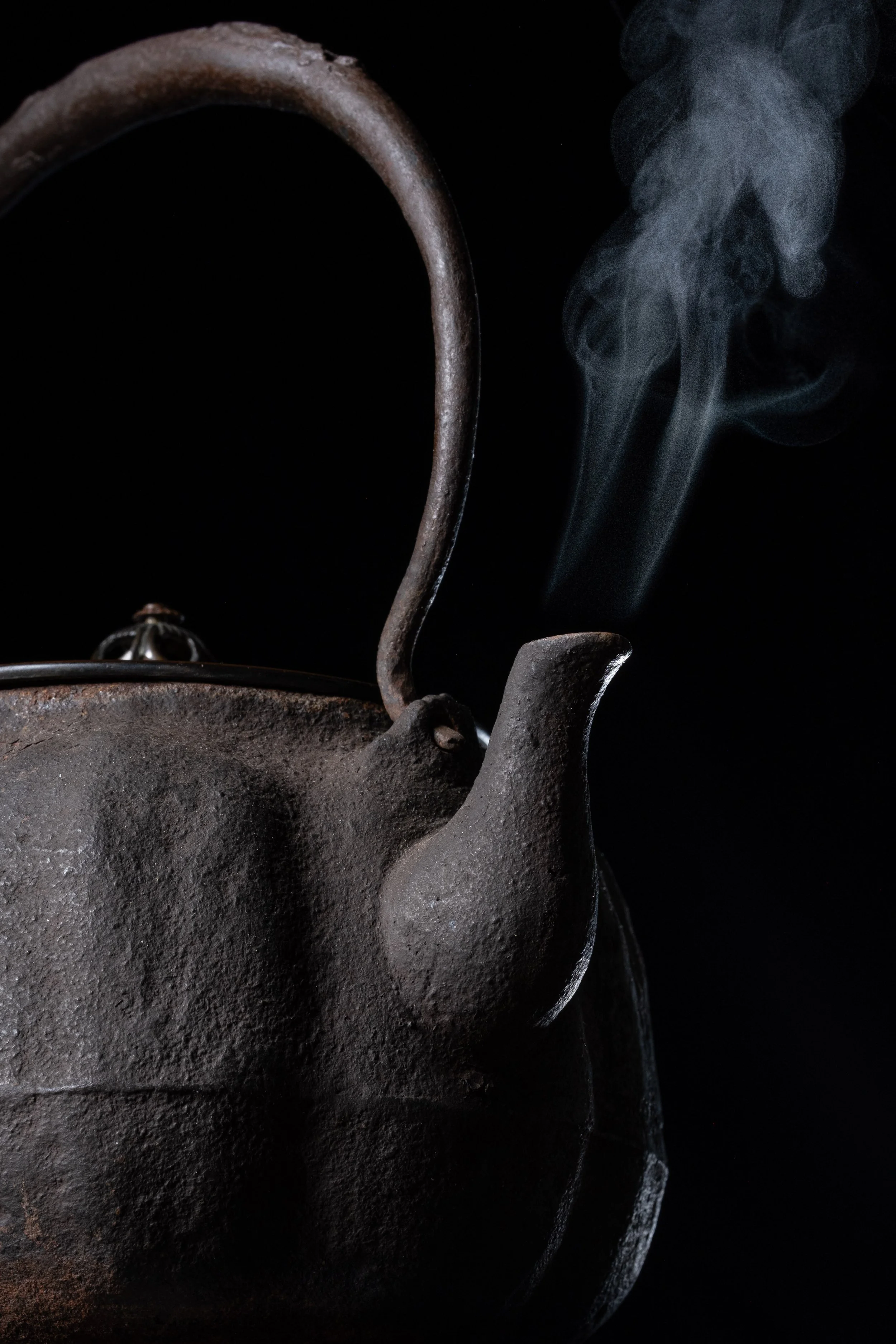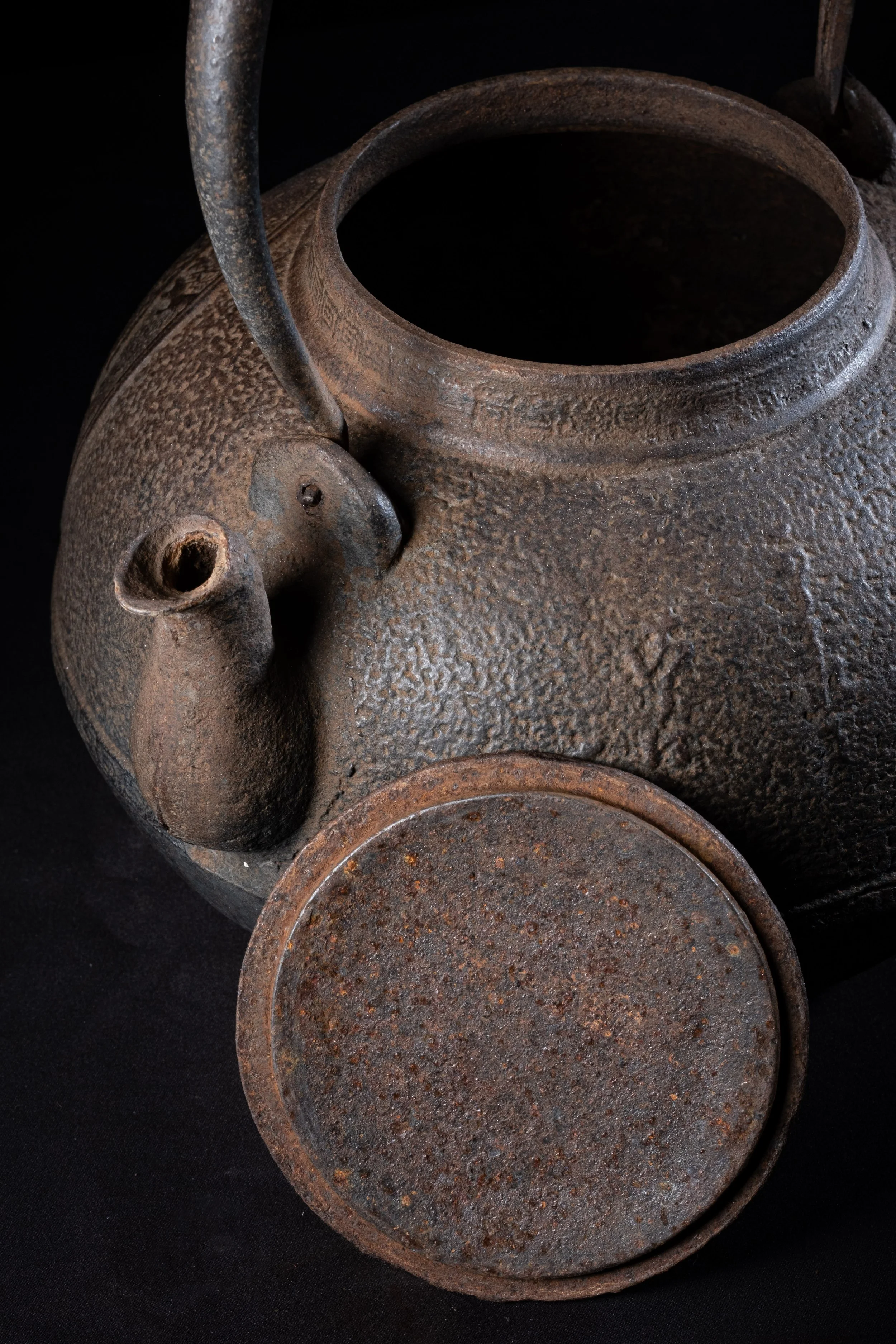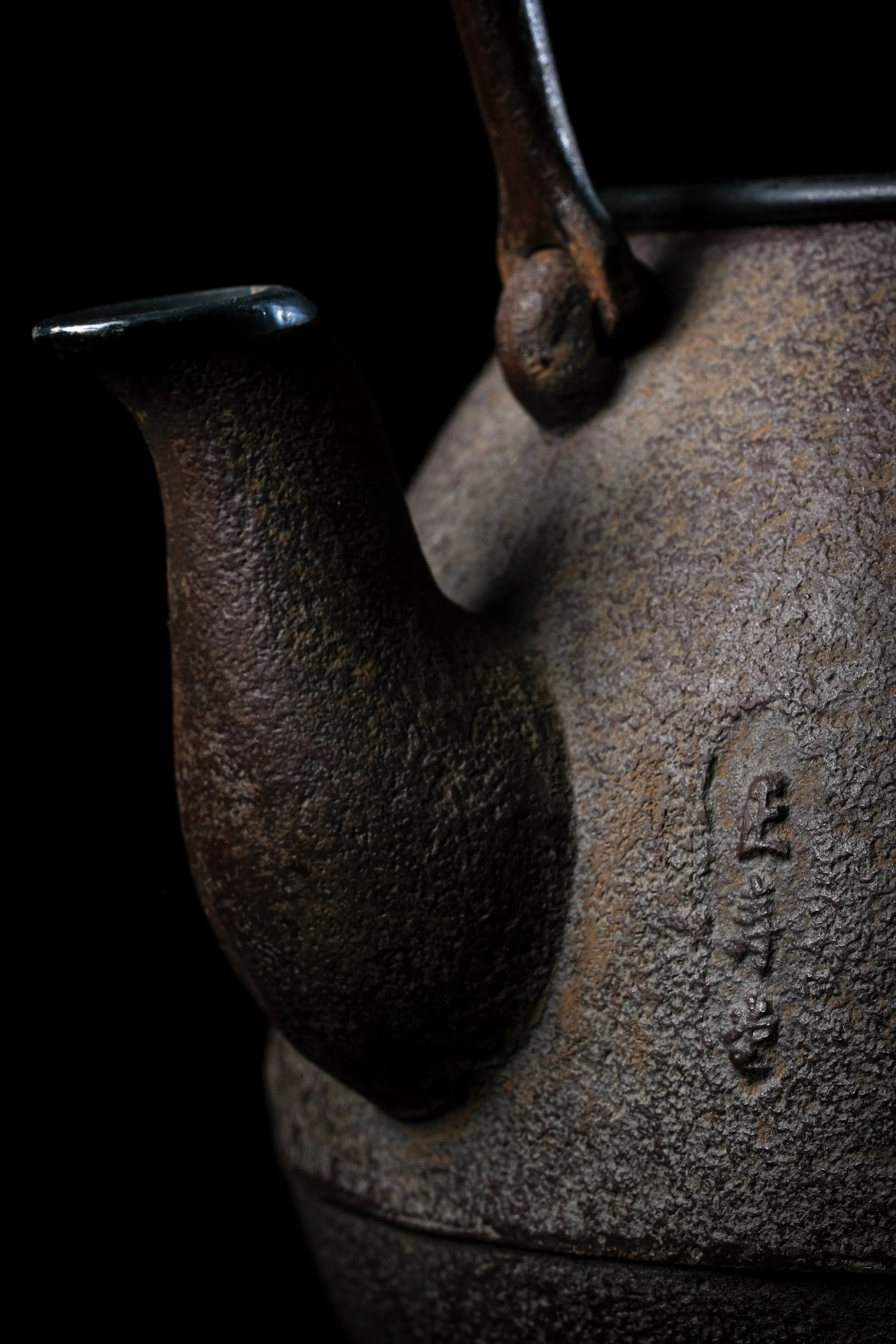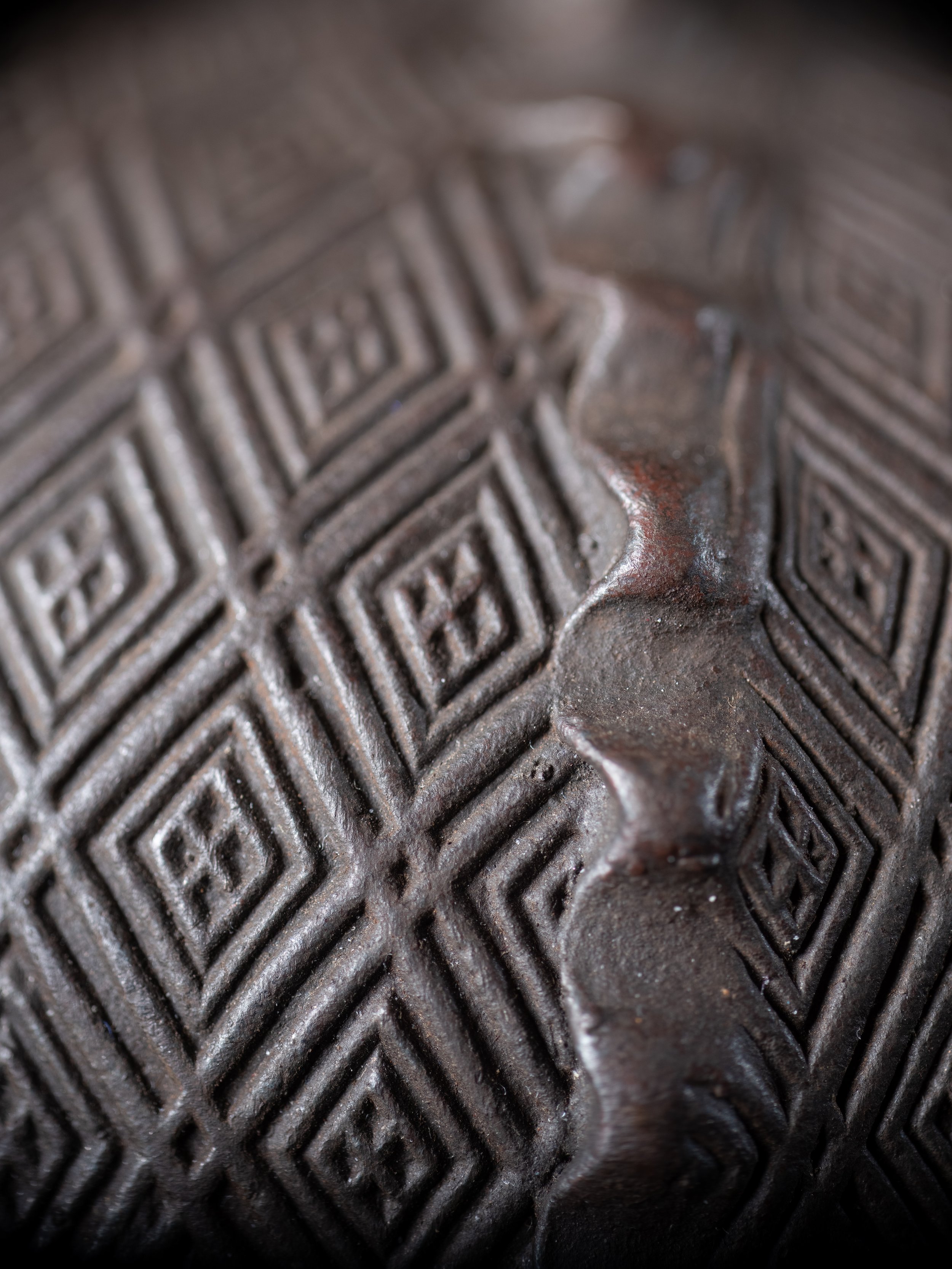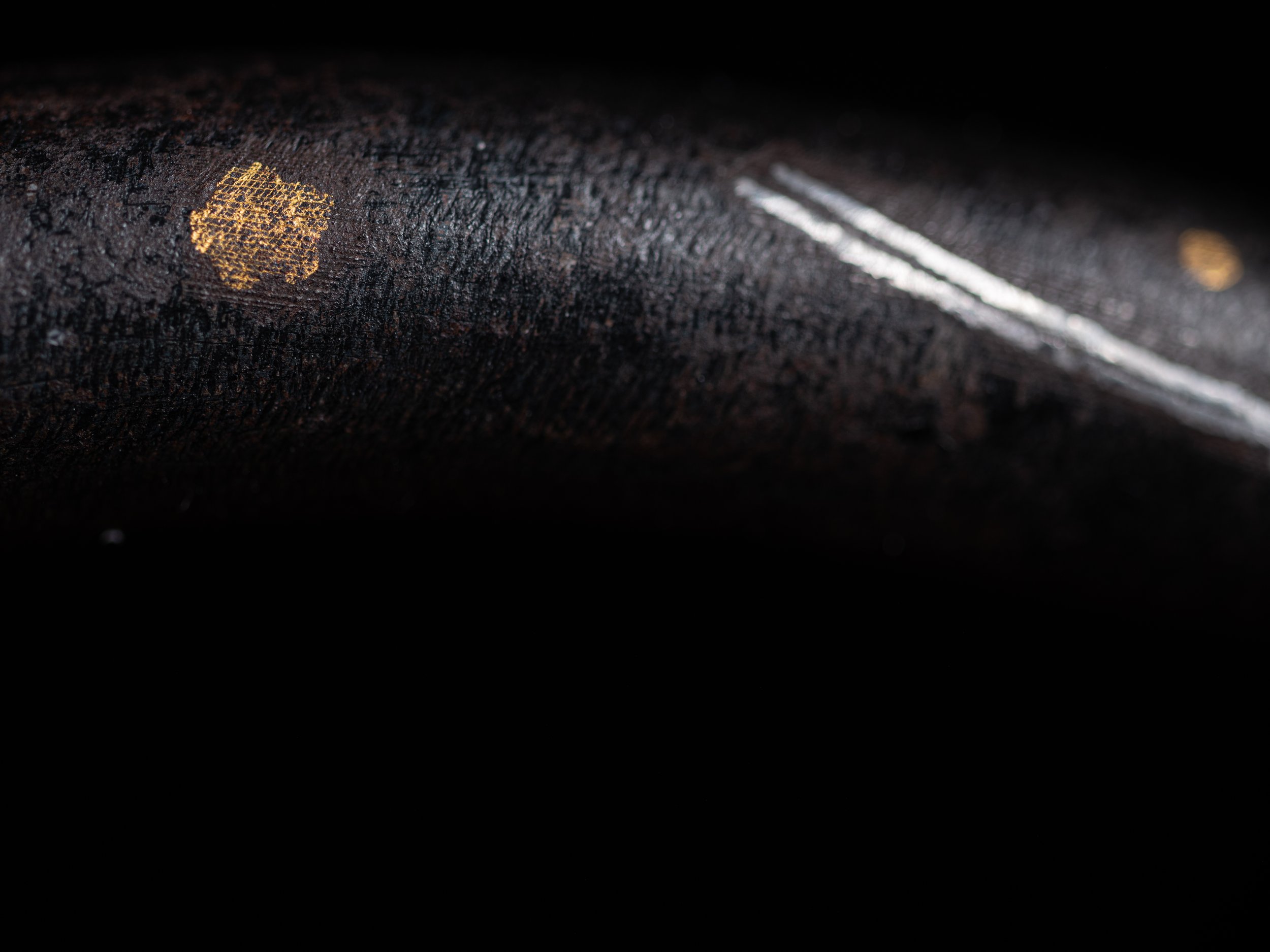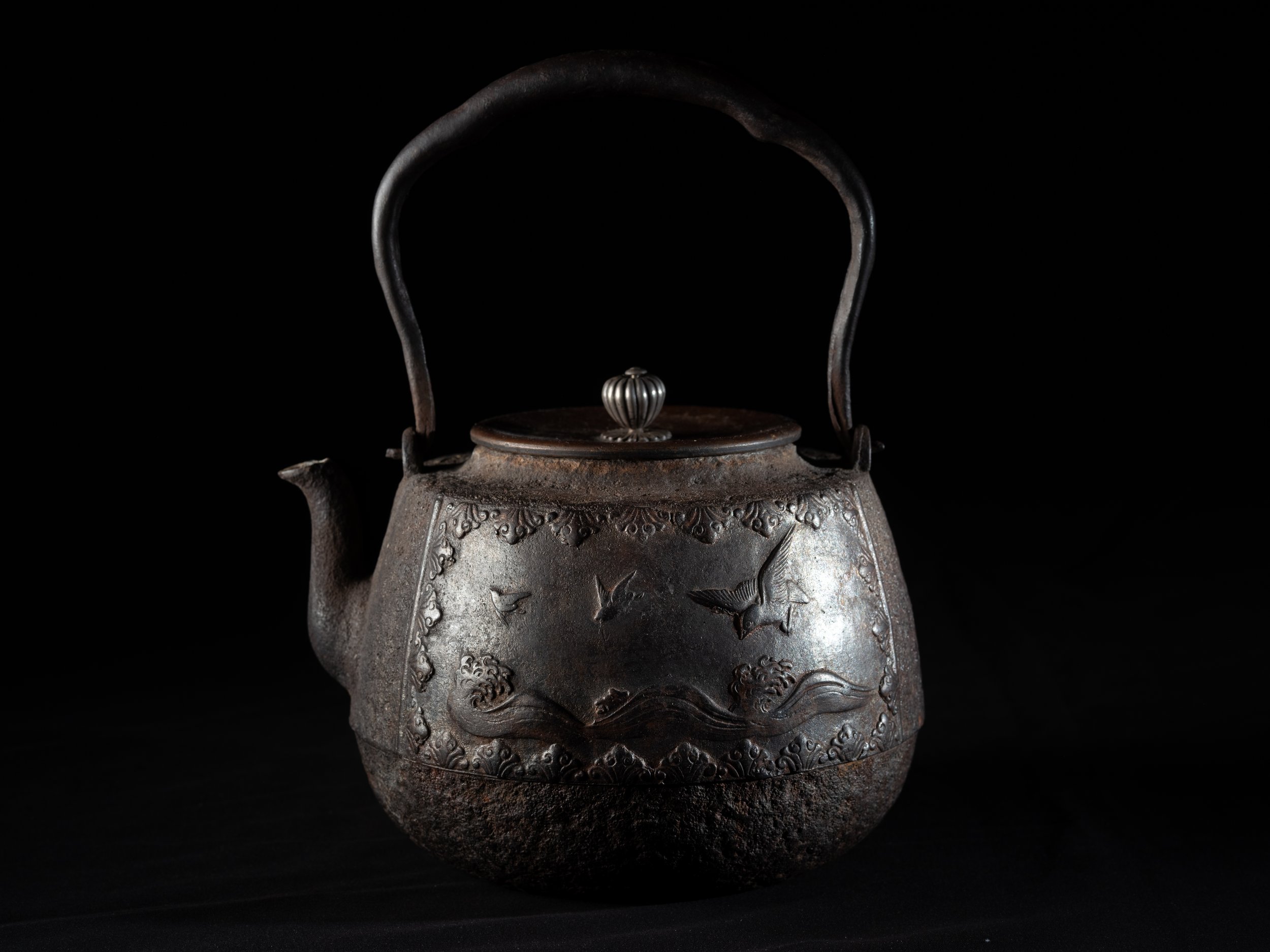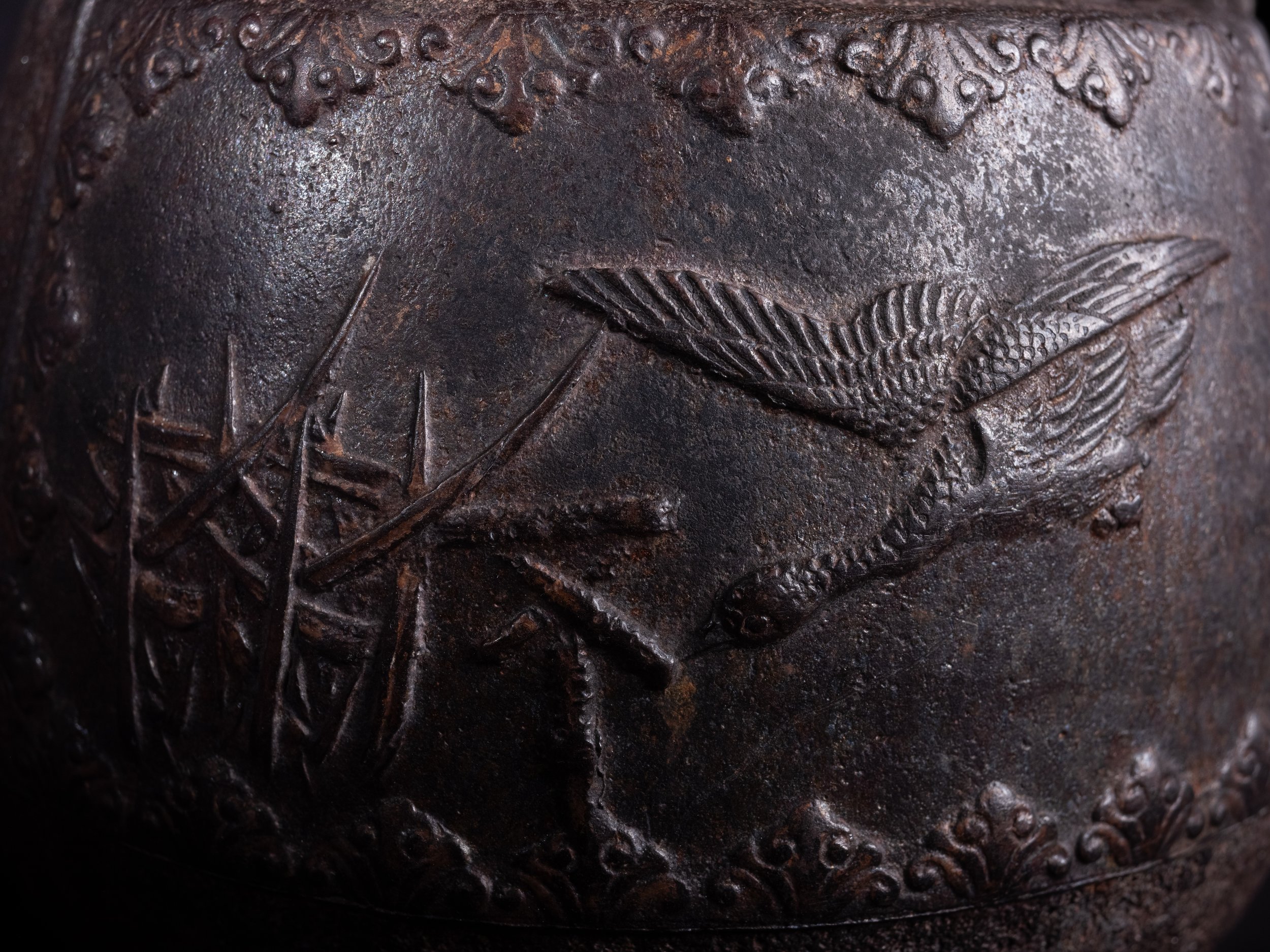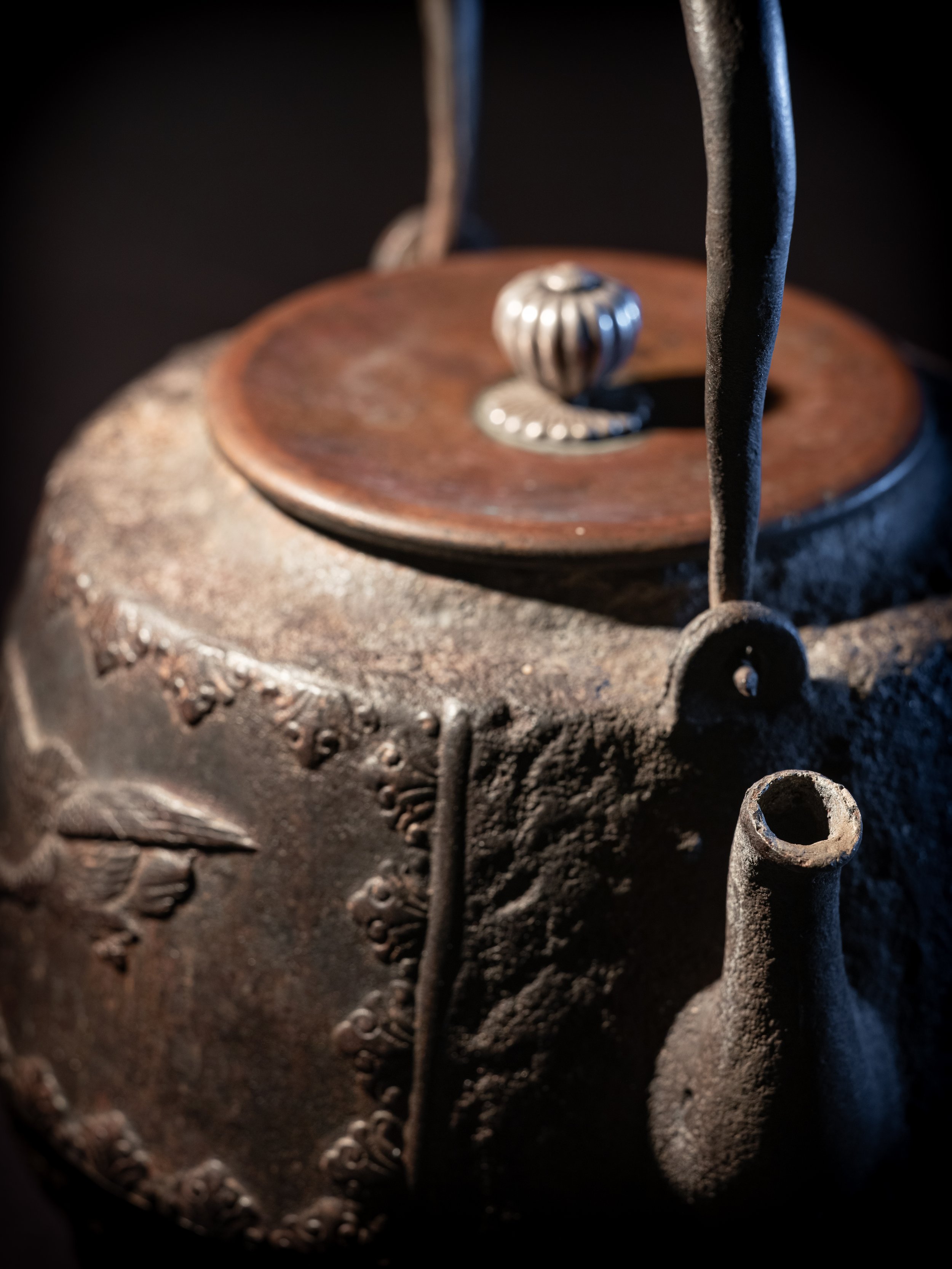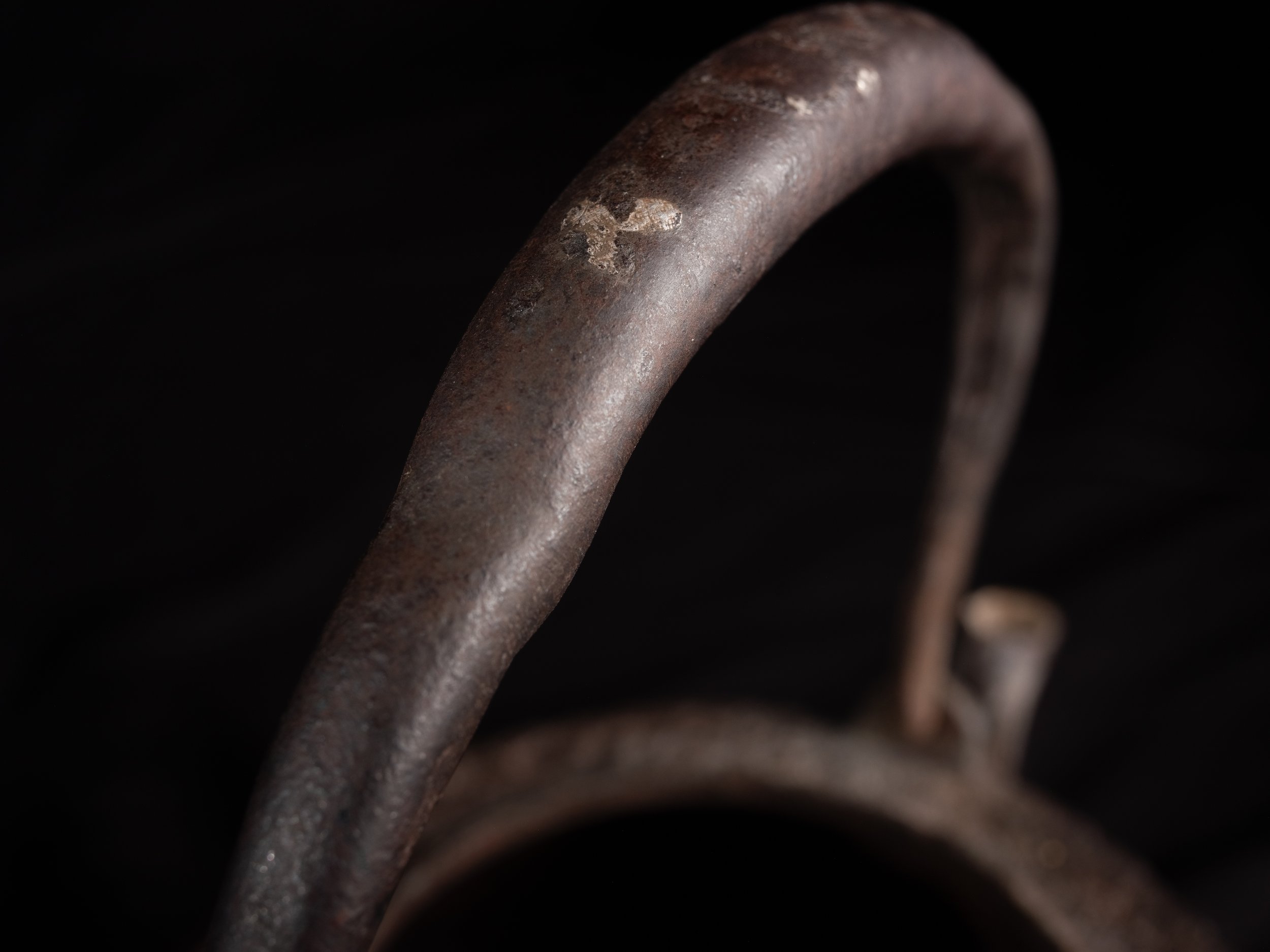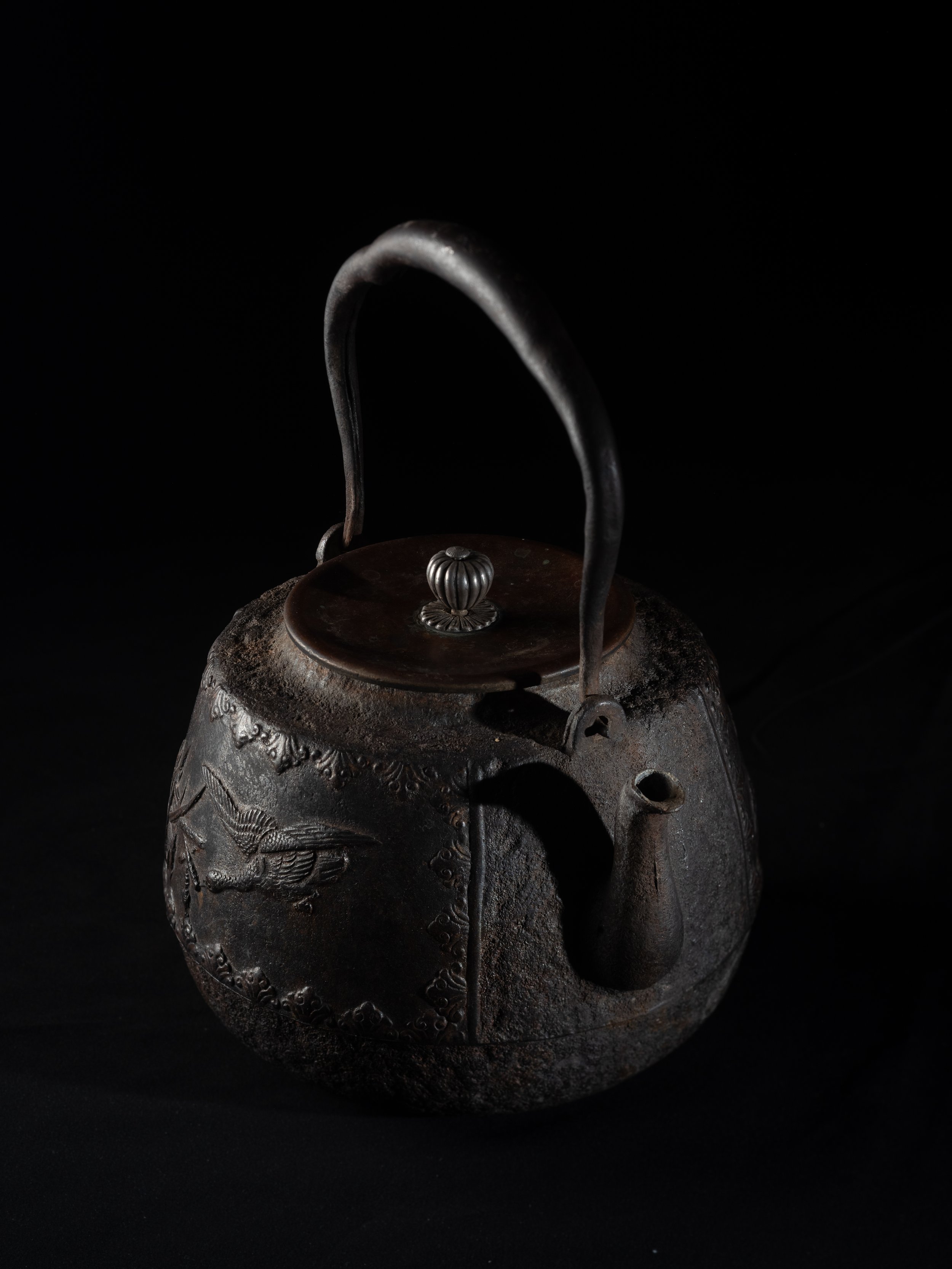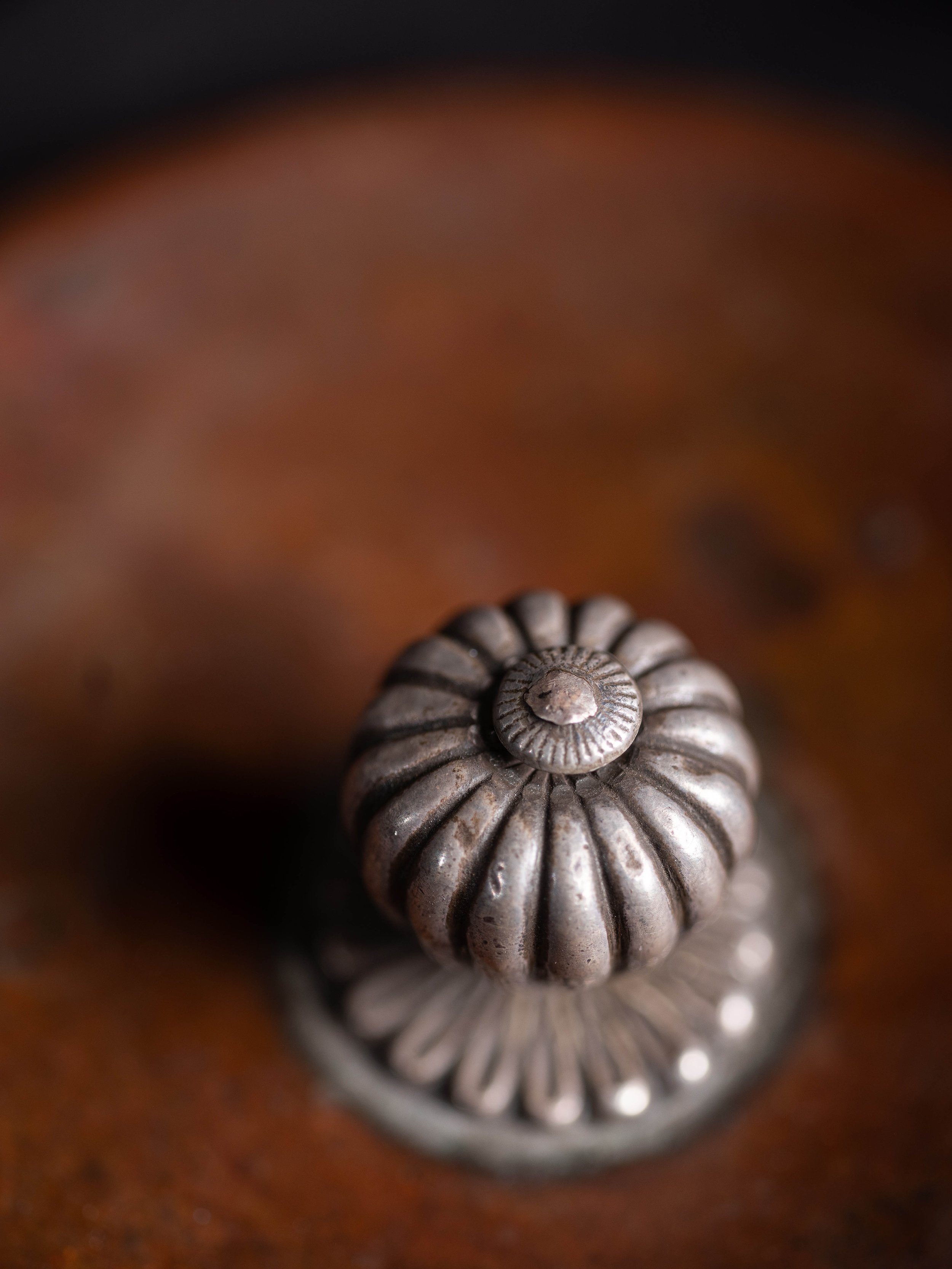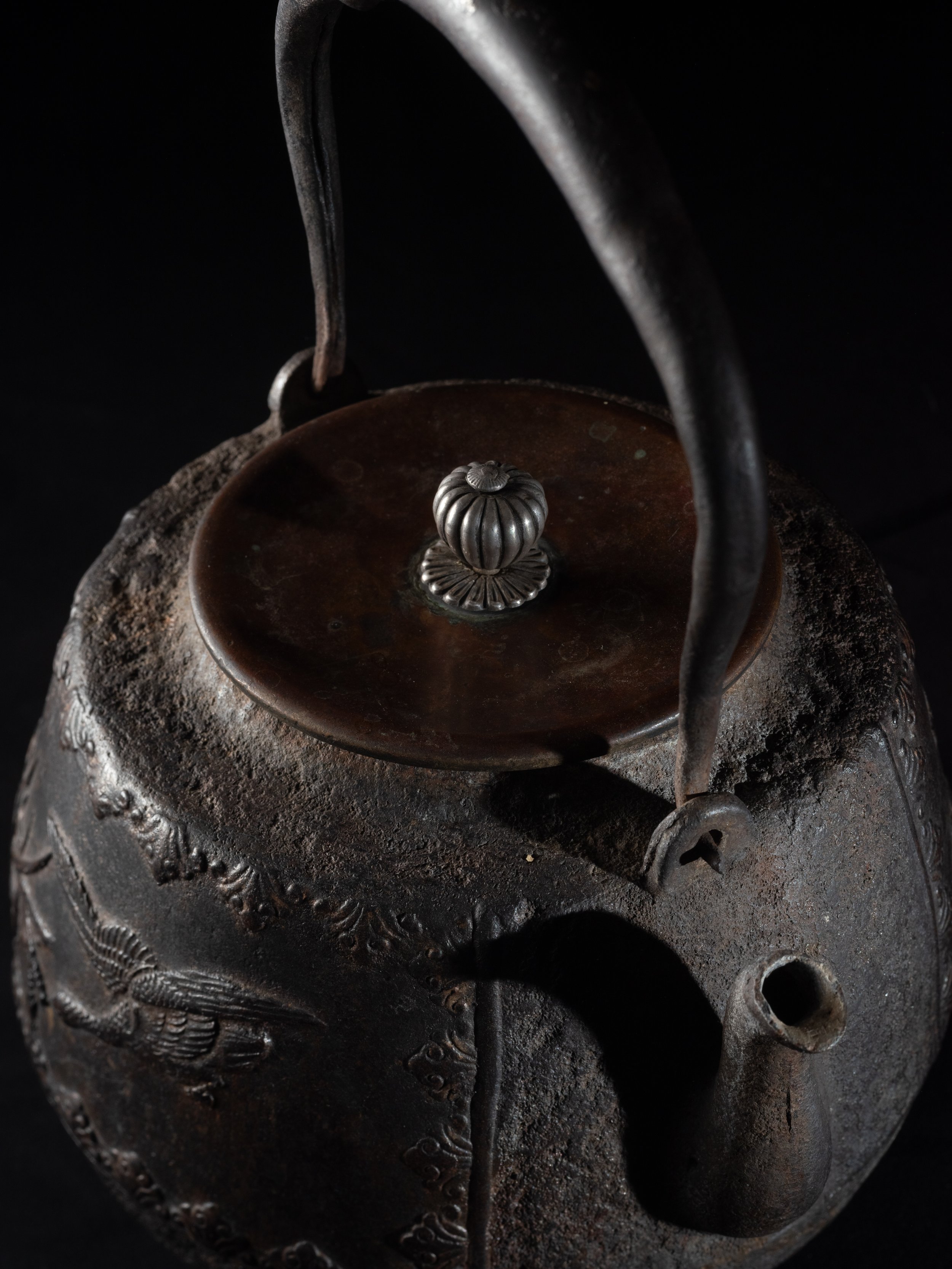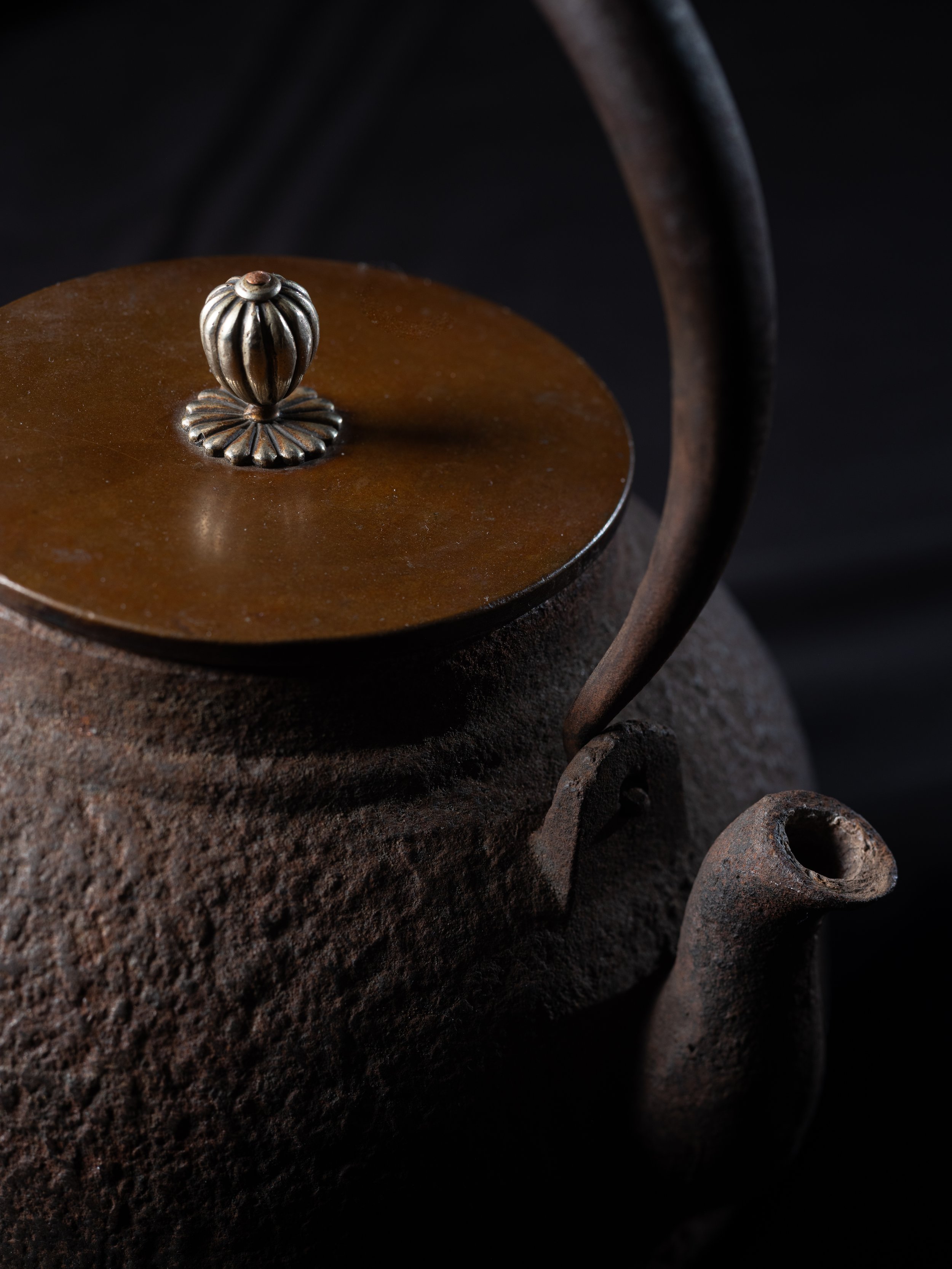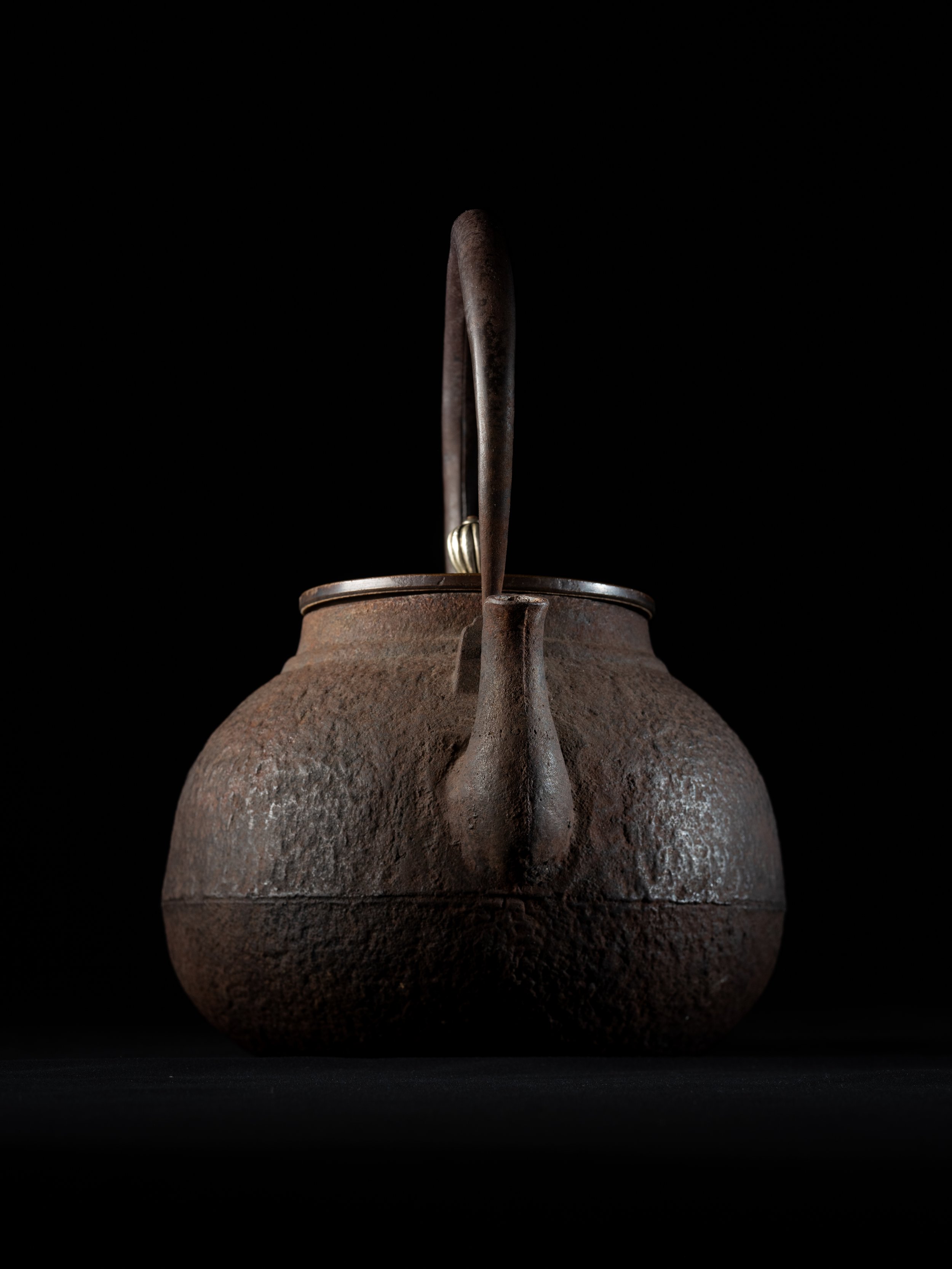
-
…a broad selection of fine antique tetsubin carefully vetted and lovingly restored by tea people for tea people. All profits from our tetsubin sales go to Boulder Tea Hut, a not-for-profit organization dedicated to supporting contemplative tea practice. Only about one in one thousand tetsubin we review pass our selection criteria. Our restoration process is unparalleled because it is driven by love for sharing tea rather than commercial incentives. These tetsubin are intended to serve as a central element of your tea practice and become a multi-generational heirloom. Your tetsubin comes with a satisfaction guarantee and a lifetime warrantee (so long as you care for it properly, as described below). We want you to treasure your tetsubin for the rest of your life. It has already lasted for centuries; well cared for it will last many more.
Each tetsubin has a story, and to practice with one is to practice with a piece of history. The energy and water enhancing qualities of tetsubin can greatly improve the brewing of aged teas and shou pu erh in particular. When we practice with each tetsubin we aim to get to know it so that we can describe it to you as we would describe a friend.
With such an intensive process we are only able to offer a limited number of tetsubin per year.
-
We mainly search for tetsubin suitable for bowl tea and gong fu tea.
We track the tetsubin market across four continents and in half a dozen languages. We shortlist about 2% of tetsubin and buy about 5% of those, meaning that one out of one thousand tetsubin make it into our curation and restoration process.
Once the tetsubin comes to us we put it through a restoration process that we believe is unparalleled in the world, partly because we are doing this out of love, not for money. We are a tetsubin adoption agency, not a store. Lest you laugh we have discussed requiring people to apply before buying. We want you to fall in love with an heirloom that you will steward for the next generation, that you will delight in using every day, and that will feel like a dear friend along the way.
Each tetsubin is fostered through restoration by a tea practitioner and is further vetted before being declared ready to be adopted.
What do we look for in a tetsubin?
Old. We want tetsubin from the time of craftsmanship, before manufacturing. We could spill thousands of words here about legacy, human relationship, history, and art. For now, it suffices to underscore that each tetsubin here was crafted by a person for a person, and used and cared for over generations, until arriving in to your hands for use and care. In our mind you are adopting a tetsubin to steward it for the next generation.
We also value the old iron far more than the modern iron. Its imperfection by modern metallurgical standards - the porosity, the roughness - is part of why old tetsubin make far better water than modern ones. There are a variety of antique iron types, the oldest (and best for water) being sand iron. Because Japan has no domestic iron mines, they would gather iron by dragging magnets on riverbeds—a slow process that made iron more treasured in Japan than elsewhere in the world. A tetsubin was one of a few rare iron implements that most families would own.
There are a huge number of often impressive antique tetsubin forgeries and it takes a well-trained eye to spot them.Size. Getting this right, whether for bowl or gong fu tea, is a lot harder than you’d guess, and we have a collection of impressively huge and amazingly tiny tetsubin as proof of tuition paid.
Spout. We value a smooth pour, either heavy for bowl tea, or lighter for gong fu. A rare subset of tetsubin do both well. With experience one can know how well a spout is likely to pour from looking at it, from its shape, the type of iron, and the state of corrosion or damage to the spout tip. It is incredibly difficult to make an excellent spout, both in its essential shape and in casting, as casting errors most easily show up in the spout.
Due to how Japanese used them, tetsubin well-suited for bowl tea are significantly more rare than tetsubin suitable for gong fu.Aesthetics. Most tetsubins were made by average craftsmen. Even if they managed to make a spout that pours well, the proportion or shape will be inelegant. Proportion and craftsmanship on dozens of other aspects of the kettle can easily suffer as well. You know it when you are pouring from a well-crafted kettle.
With Cha Dao being mostly a feminine practice we try to find tetsubin that are more feminine or at least neutral. As you will see even from our selection, tetsubin tend to more masculine. It is also important to select kettles that can show up in harmony with tea ceremony, especially for a generally western audience. Along with poor craftsmanship and bad proportions, there are some goofy looking tetsubin out there.
There are a long list of other details to keep an eye out for: the type of iron (Wax cast? Sand cast? Sand iron? Modern casting?), holes and leaks and repairs, the quality of the lid and button, the state of the interior (rusty? Mineral buildup? Lacquered?), whether the handle stands up, silver spouts, silver details on handles or the tetsubin itself, to name a few.
Even with significant experience our purchasing activity is hit-or-miss and a significant number of the tetsubin that come to us need either significant repairs or cannot be repaired. For all these reasons when people come to me asking where to buy a tetsubin we discourage them from doing so: it is far more work than we ever imagined to do this well. We add great value for you by giving you a carefully curated and described selection, and further with our world-class restoration process. And if you and your tetsubin don’t fall in love with each other, please send it back so we can help it find the right home.
-
Tetsubin should only be heated on infrared or charcoal heat. The focused heat of gas or can cause them to crack or form a leak. Butane and alcohol combustion release water vapor, which will corrode the tetsubin over time. Sand iron tetsubins (the oldest kind) are the most fragile, as well as the rarest type of tetsubin.
No kettle of any kind should ever be left empty on a heat source. Tetsubin are extremely robust and over the years we have done this a few times by accident without consequence but you should organize your practice around never doing this.
After using the tetsubin, remove it from the heat source, empty it of all water, remove the lid, and allow it to air dry. If you leave water in the tetsubin or do not remove the lid it may begin to rust.
See #3. Please remember #3.
Should your tetsubin begin to develop a rusty flavor boil green tea in it. Some tetsubins require this every few years even if well maintained per #3 above. Tetsubin need to be used regularly or they begin to rust.
Never put your fingers inside a tetsubin unless you have a clear idea of what you are doing.
If a green tea boil does not solve the flavor issue you can scrub the interior to remove rust, rinse with water (no soap!), boil with water to rinse further, and again boil gently with green tea inside. If this does not solve the problem you can send it to us for more advanced restoration.
-
Our restoration process is intensive to the point of being non-economic to do for profit: the chajin involved in Boulder Tea Hut’s Tetsubin Club participate out of love of the idea that we stand for (tea lovers restoring tetsubing for tea lovers, with love), and because by participating in the restoration process they experience a broad range of tetsubin, from which they learn a great deal both practical and spiritual, cognitive and wordless. Eventually they will fall in love with a tetsubin or two and keep it for themselves. We are like foster parents taking care of stray tetsubin until they are ready to find their forever home.
In our world you cannot restore tetsubin without also being a tea person, or chajin: you must have an appreciation for water quality—not merely its taste, but also its structure and how it interacts with different teas. You must have a felt experience of the kettle’s pour, and to know whether it is good and whether it can be improved. You must have the subtlety to notice the sound the kettle makes. And more. We aim to get to know each kettle individually—as we would a person—and to describe it to you accordingly. By the time it leaves our door it has been a teacher and friend to us, and we hope it will be the same to you.
Restoration steps:
1) Evaluate the interior. We have received tetsubins with concrete in them, strange, colorful, and mysterious bubbling chemical stains, thick char deposits, and of course rust. Some tetsubin have clearly been used as planters. Others were never used and still have a layer of sand from the original casting. Yet others are lined with a natural lacquer. Some have extensive rust that is completely fine and even beneficial. Others have extensive rust that renders the tetsubin completely useless until restored with sophisticated techniques. Yet others have a sometimes thick layer of mineral buildup from decades or even centuries of use with hard water – or if you are lucky – natural spring water from centuries of use by tea lovers.
It takes experience to tell the difference among all these. A friend once asked to restore a “damaged” tetsubin that simply had a good mineral buildup. Fortunately the friend hadn’t tried to restore the tetsubin themselves.
2) Clean the interior if necessary. The appropriate technique depends on what is going on. If appropriate we use everything from electrolytic rust removal to hard scrubbing to simple boiling. Often the spout needs some special attention with the right kind of brush.
3) Touch up interior spout shape if necessary and appropriate. The most challenging part of a tetsubin to cast is the spout, and it is where casting errors most easily show up. During all but the late history of tetsubin production, Japan lacked the metallurgy to produce files that could work against iron. With a trained eye and experience with a hundred spouts, we can gently and significantly improve the pour of antique tetsubin. We think their makers would be delighted to know our care and love for their craftwork, and would have done the same thing had they the technology.
One of the beauties of more modern tetsubin is the improved metallurgy and casting techniques that have allowed better spouts, but as previously noted this has come at the expense of water quality and character. Quality crafted modern tetsubin are also a rarity, lost among a sea of manufactured kettles that we tend to think of as fakes or weakly imitative garbage.
4) Repair any cracks and holes. Cracks can often be repaired by boiling glutenous rice in the pot. The starch seeps into the crack and hardens under heat. There are more advanced techniques (for instance silver soldering) that we are working to learn as there are some amazing kettles to which we hope to give a new life (and amazing water qualities—think iron + silver) with these techniques.5) Miscellaneous aesthetic repairs: Polish to reveal any silver and gold details, and potentially re-plate any faded gold plating. Straighten and sometimes replace the lid button. Sometimes match a better lid to the kettle. The lid button is the most fragile part of the kettle and also the part that sees the most kinetic impact, and over decades or centuries buttons break and need to be replaced, or the lid needs to be replaced. This is one of several reasons you cannot trust lids to identify tetsubin makers.
6) Season the tetsubin with tea. The traditional way is to boil sencha (Japanese green tea). The tannins in the leaves react with the iron to create ferric tannate on the surface of the iron, forming a natural antioxidant layer, protecting the kettle from rust.
7) Further season the tetsubin with spring water. We are blessed to have a very good spring next to our mountain teahouse that deposits a beneficial mineral layer on the interior of kettles. This layer both protects the tetsubin and softens its water. We hand-carry this water from the mountain teahouse and then use it in the kettles for a few weeks to establish an initial layer of minerals, ensure the water is as good as it can be, that any crack and hole repairs are holding up strongly, and to get to know the tetsubin so we can describe it to you as best as we can.
8) Carefully photograph the tetsubin and its pour, measure its volume, and describe the tetsubin for you.
-
I have spent a great deal of time thinking about how to price tetsubin. I love these kettles and I love sharing them. I’m generally averse to making money on things related to tea, and the amount of time I spend on these kettles is not remotely worth the financial return. Further, I currently commit the modest profits from this endeavor to support Boulder Tea Hut, which is a not-for-profit organization. And as noted, what we do here is unique. Given that context, how then to price this teaware?
Sourcing these kettles is fraught with far more complexity than I ever expected. I run active searches globally in seven languages, six of which I can read well enough to diligence a variety of potential issues in kettles from leaks and cracks to being too big or too small. Even then kettles often arrive with those problems, and many more than can only be ascertained once the kettle is in my hands. I review around 4,000 kettles a month and buy around four of them. Because of all the problems that happen, one of those four often don’t make it. From hard-earned experience and personal practice I have learned to have a good sense of which spouts will have a good pour, which handles will have a good feel, which metal will make good water. My near decade of tea practice with many beloved tetsubin along the way has provided essential experience to be able to do this. The restoration process, as noted above, spans from various forms of chemistry to metal grinding and a high sensitivity to water quality, and is becoming only more sophisticated as I continue to develop my skills. I’ve had to take significant risks on kettles in the process of restoring them, at times ending in failure. I’ve spent a lot of money on this project to learn how to do all this. This is art for me—to identify, elevate, create, and protect beauty and history. I love that this is art that you can hold in your hand every day: intimate, sensual, an object that can be a friend, and that you can pass on to an heir.
My general approach to founding Boulder Tea Hut has been to support and empower people to take the role I had—to effectively grow the organization so that I can be out of the picture. I’d love for someone to develop all the skills above, and I educate people in the Tetsubin Club as time allows. I’d be delighted if someone steps up to develop all these skills, and I don’t anticipate this is an endeavor where I can be so easily replaced.
I experience the exchange of money as an exchange of energy. I finally achieved clarity on pricing when I asked myself, “what is the price whereby I feel the energy to keep doing this?” That is how the prices are set. Given the uniqueness and beauty of what we share here and the intent behind it, I do not worry about these kettles finding their way to the right home at these prices. With their beauty, history, our lifetime guarantee and satisfaction guarantee, and the unparalleled restoration process, they are in my mind a fantastic deal at these prices. In fact our prices are quite a bit lower than traditional tetsubins made by contemporary craftsmen—and if I am to be candid I would take an old tetsubin over a new one almost every time, for a broad range of reasons from beauty to water quality.
Given the energy exchange framework, if you have given significant energy to our shared project of Boulder Tea Hut, the price for you is different—please ask. I also keep to the side some lower-end tetsubins that may be a good place for those of more modest means to start. If you find your way to a tetsubin outside of us, we also are happy to consider restoring it for you. It is rare that I have been asked to restore a tetsubin that is remotely on par with the ones we offer here, but at the core of my efforts is my desire for you to fall in love with your kettle, and if part of that means finding it yourself (which I can certainly empathize with!) then I am here to serve.
--Stephan


